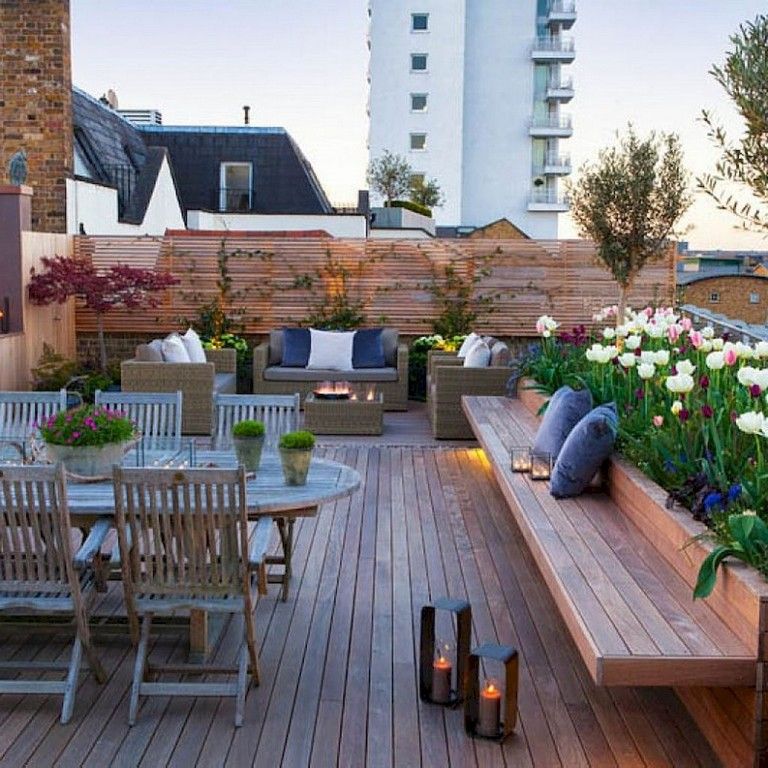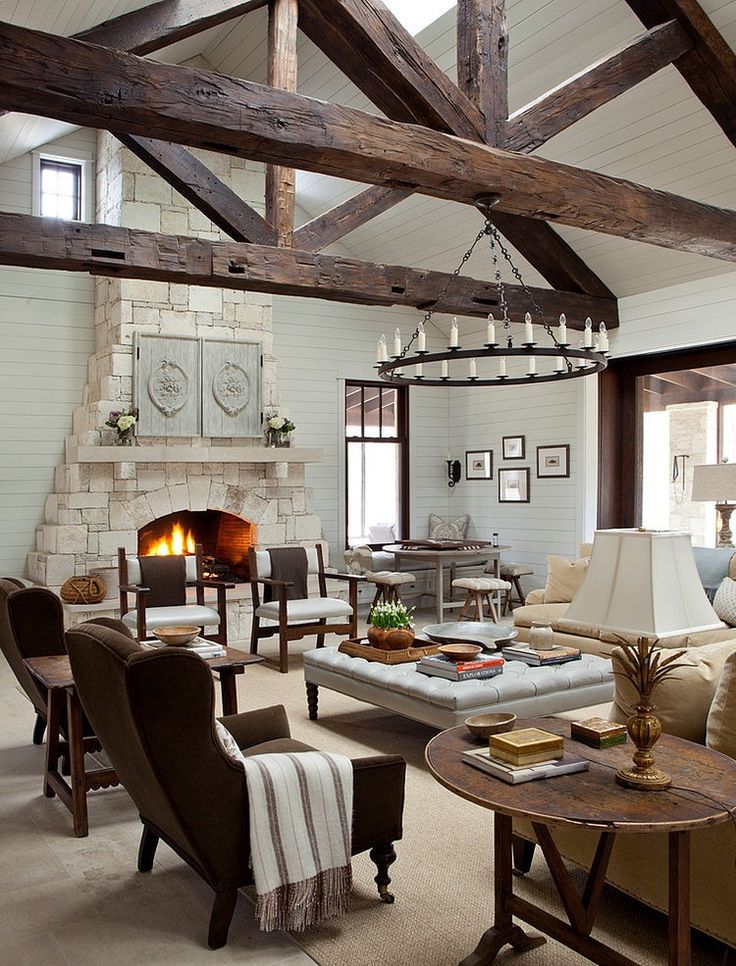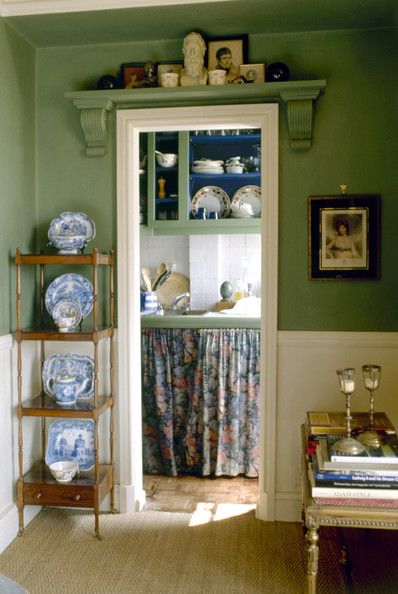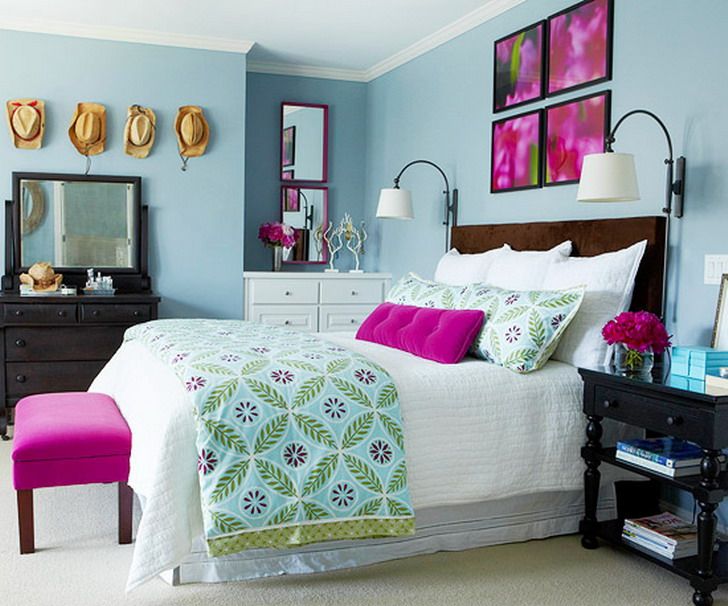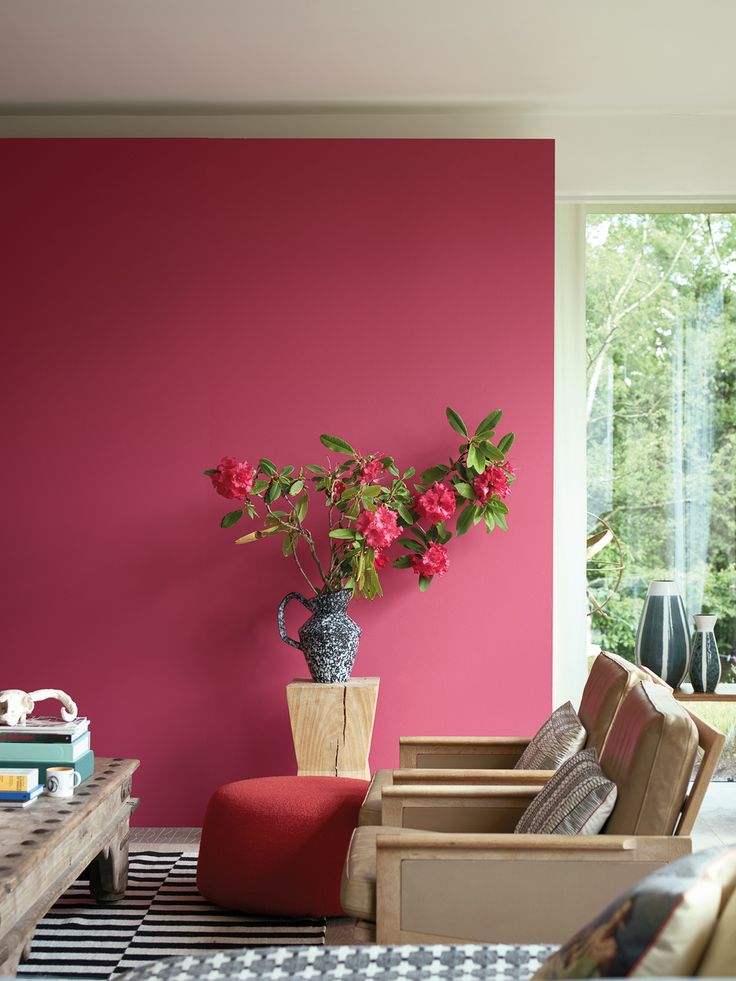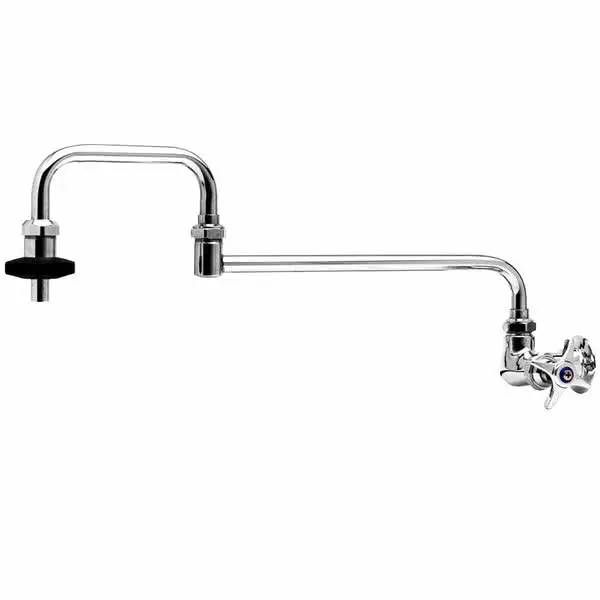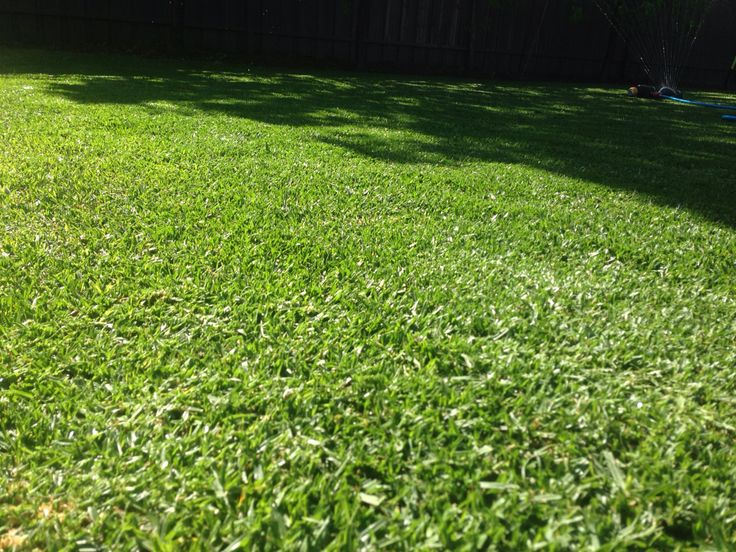Terraced gardens ideas
29 Terraced garden ideas
Have you got a steep and unleveled garden? Maybe your home is on a plot with an incline? Create a unique outdoor living space by organising and levelling that steep slope into terraces. A terraced garden is simply a series of small gardens on different levels that not only make it look pretty but also help to prevent erosion.
By turning a slope into a terraced garden you basically multiply the available space. It allows you to play with levels in a dynamic and dimensional way. Designing a series of interconnected, multi-level garden beds adds a lot of character to the space. And the result can be a wonderfully dramatic garden with a stage-like, amphitheatre feeling.
This means you can create separate zones with individual purposes, such as decks or patios, bench seating, a firepit area, ponds and pools. So let’s jump in and look at tips for creating a gorgeous multi-level terraced garden full of visual drama.
Source: Photo by Meritt Thomas on Unsplash1.So many of our homes are concentrated along Australia’s coastline. It makes sense to fill your terraced garden with plants chosen specifically for their structural strength to withstand the elements. Even if you don’t have a coastal garden, it’s a good idea to plant the levels of your terraced garden with plants that offer good natural structural support. Consider: Westringia, Miscanthus and Lavender.
2. Go for pleasing organic, rounded formsAdding timber decking to levels of your terraced garden? Stay true to the natural contours of land and space with curved decking. This will keep your terraced garden looking well-defined but still appearing to sit naturally in its context.
3. Maximise the spaceHaving several levels really maximises the available planting space. Aim for orderly layers of solid plantings in a harmonious colour scheme so that everything looks neat. Have a three-layer terraced garden? Try chalk stick succulents at the top, have a waterfall of Dichondra ‘Silver Falls’ in the middle, and a tall cardboard palm at the base for dimension.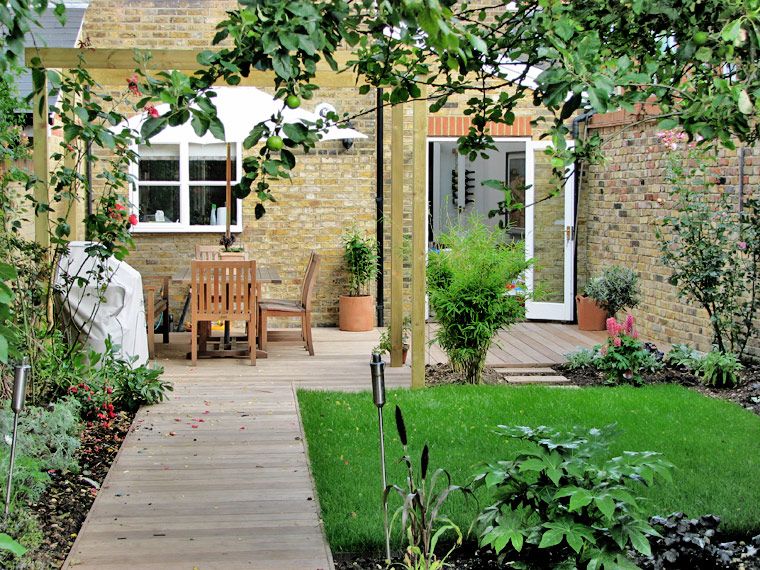
Build your terraced garden retaining walls in the same materials as your home itself keeps the indoors connected to the outdoors.
5. Terrace with grassesOrnamental grasses look beautiful in a terraced garden as they stir and sway in the breeze, and the more layers, the better. Overlapping terraces full of low-maintenance grasses and shrubs soften up the hard lines of structures. And they provide pleasing hypnotic movement.
6. Play with waterWater features always create visual interest in a garden but they are especially well suited to terraced gardens. Little waterfalls or fountains complement the idea of a slope. Gravity making water trickle downhill just seems natural. You might even want to incorporate your water feature into your irrigation and drainage system.
7. Decide if you need stepsAuthentic, formal terraced gardens traditionally include numerous sets of stairs at varying angles.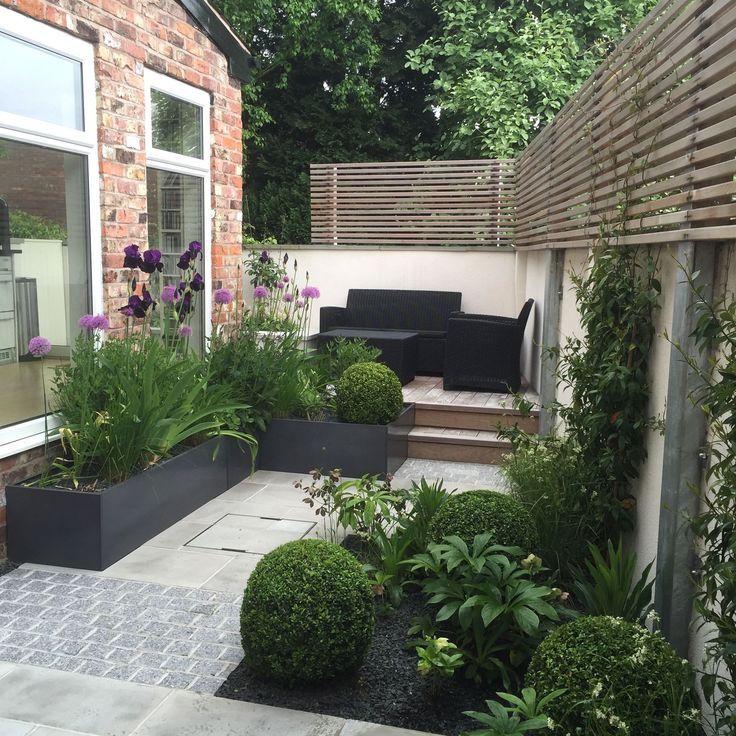 This is intended to allow for journeying through different spaces. Consider your needs: do you wish to wander through your garden or just view it from afar? Do you need access for maintenance? This will help you decide if you need to add steps.
This is intended to allow for journeying through different spaces. Consider your needs: do you wish to wander through your garden or just view it from afar? Do you need access for maintenance? This will help you decide if you need to add steps.
If you love a neat, linear look, have parallel tiers. Tiers created by stone retaining walls or rows of trees and hedges in a terraced garden result in a series of horizontal parallel lines. These are very visually pleasing.
9. Have multiple zonesGardens are not the only option for your terraced space—you can also include little social spaces on different levels. One of the advantages of working with terraces is that you can create all those individual zones that make the space dynamic and functional. For example, you might feature banquette seating along textured stone walls to complete a dining setting. Or, have a spot to warm up outside for cooler nights or winter entertaining. Here are my favourite fire pit ideas that you can use in your garden.
Here are my favourite fire pit ideas that you can use in your garden.
See more outdoor dining ideas with these patio ideas and alfresco ideas.
Source: Photo by Randy Fath on Unsplash10. Add turning pointsConsider adding little steps that change direction as you traverse the levels. It makes for a dynamic and interesting composition in a small terraced garden. Rather than have a steep straight up and down set of steps, ones that make the odd turn are both pleasing to the eye and safer.
11. Light it upHighlight your gorgeous terraced garden with clever landscape lighting. It might be solar or wall lights, garden lanterns or a string of festoon lights. Either way, adding illumination will give depth to your levels and put the focus on your feature plants.
Lighting such as recessed LED strips can also help make obvious where changes in levels occur, improving the safety of steps. Speak to an expert landscape lighting designer to work out a plan for your garden needs.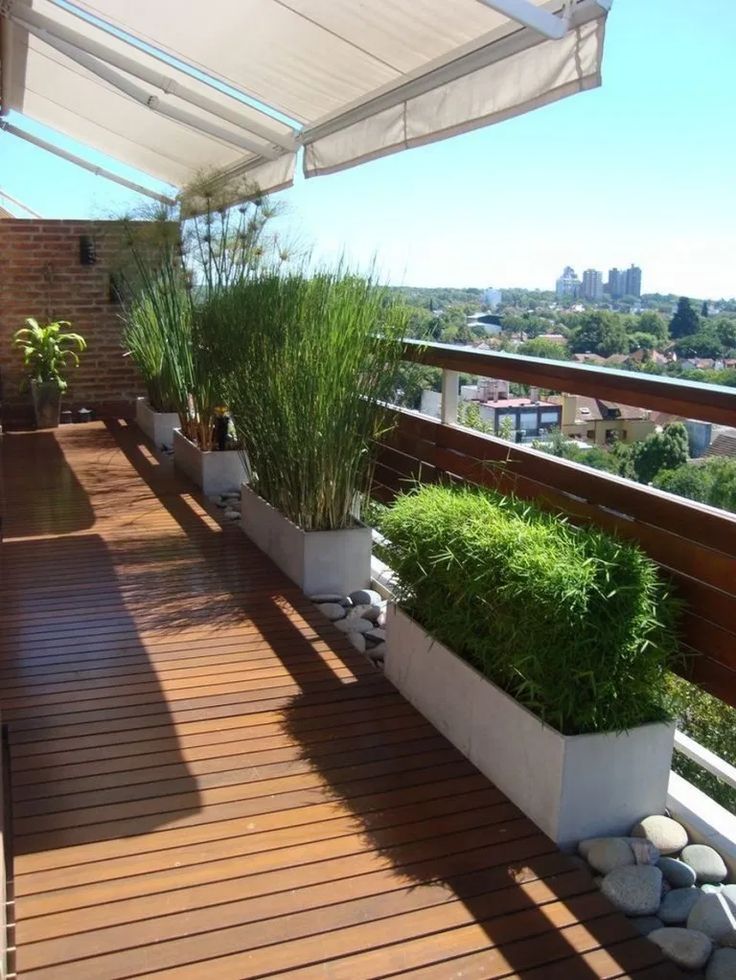
Classic terraced gardens often take the form of a semi-circular, amphitheatre shape, with terraces on either side of a set of steps. Why not plant up a terraced garden veggie patch with mint, chives, chard and tomatoes? Locate it right outside the back door for easy access for the cook.
Terraced gardens are ideal for growing herbs and veggies as they enable you to section off different kinds of plants very easily. But the beds stay close enough so that you can take advantage of things like gravity irrigation systems or companion planting. If you’ve always wanted an edible garden, a tiered set-up might be just right for you. Check out our tips on how to grow herbs on your balcony.
13. Add planter boxesPlants in containers or boxes will soften up the hard lines of a structured terraced garden.
If you need some help from an expert in planter boxes, you can always find a local to give you hand.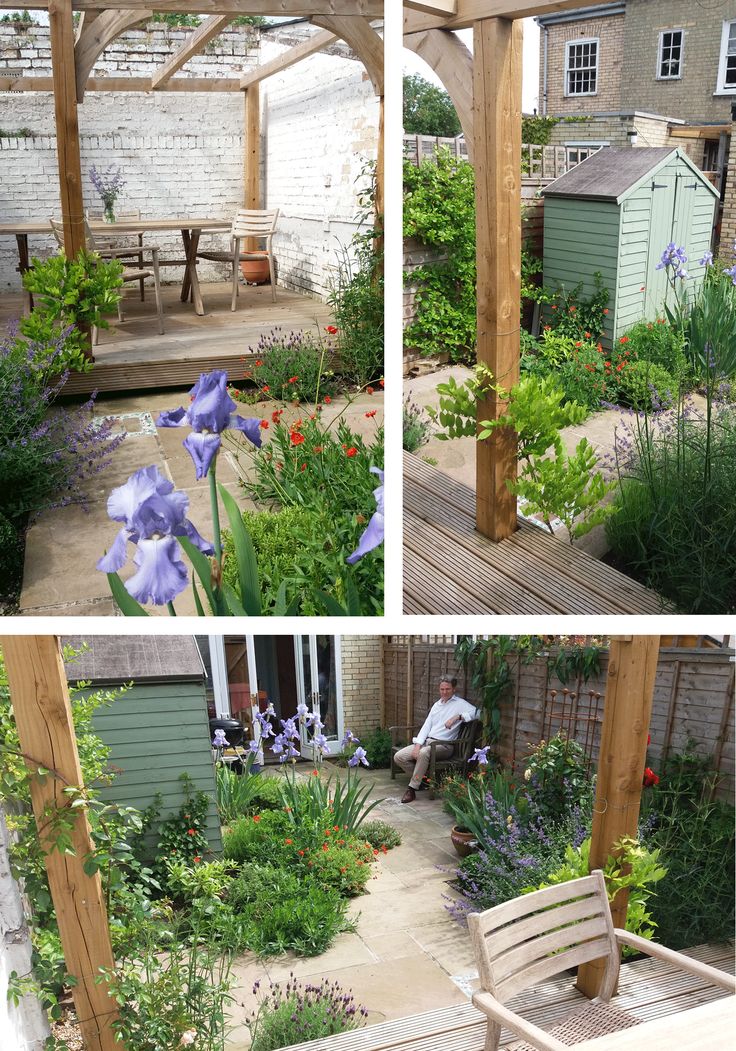
Not only do the levels of a terraced garden themselves create more space. But you can also take advantage of optical illusions that make the total space appear even larger. Clever landscaping of a terraced garden means it can seem to have a lot more space and depth than it actually has. Dimension can be achieved through a mix of textured plantings and a wandering pathway.
Source: Shutterstock15.Have steps as a design featureSmaller or less steep terraces have less of a need for retaining walls and structural support. They might be able to get away with just a few steps with gentle, low rises. Extra-wide steps emphasise the horizontal surfaces, contributing to a luxurious sense of spaciousness.
Source: Photo by Risto Kokkonen on Unsplash16. Plant low maintenance succulentsAccessibility to all your levels is a factor with terraced garden design. Steps and platforms can help you reach those tricky spots.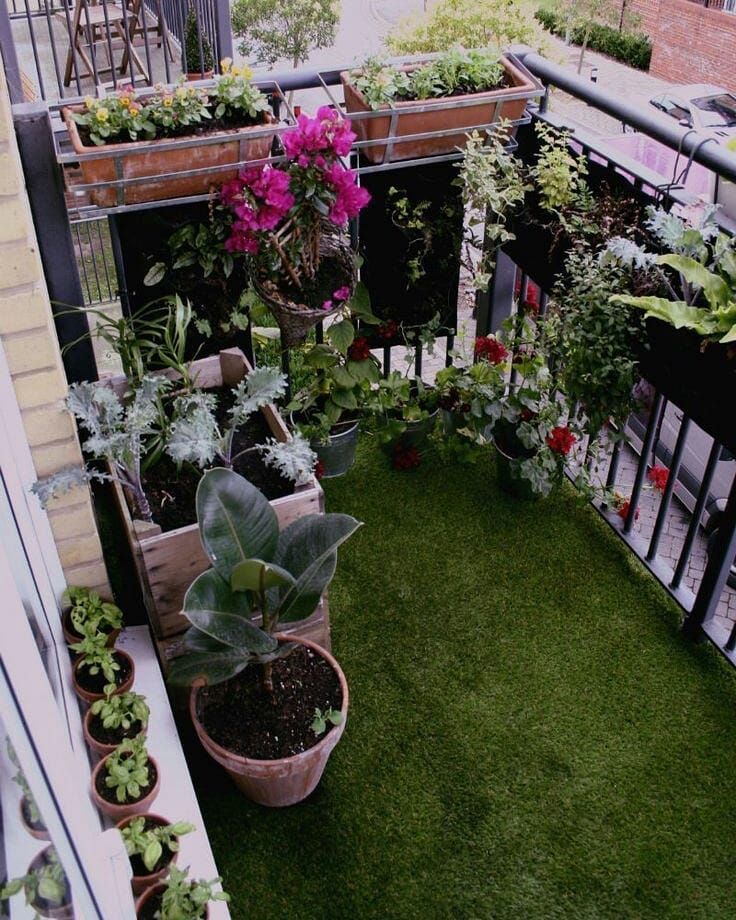 However, you can make your life even easier by planting up a variety of drought-tolerant succulents and grasses. It’s a great idea as this will reduce your maintenance and therefore access needs. And succulents can look absolutely stunning when arranged in mass plantings and mixed with rocks.
However, you can make your life even easier by planting up a variety of drought-tolerant succulents and grasses. It’s a great idea as this will reduce your maintenance and therefore access needs. And succulents can look absolutely stunning when arranged in mass plantings and mixed with rocks.
Having symmetrical garden beds either side of a set of steps is a classic terraced garden look and provides easy access to all levels of the garden. If you’d like some inspo on other kinds of raised garden beds, see also our article full of amazing raised garden bed ideas.
Source: Photo by Elvira Visser on Unsplash18. Define the stepsIt’s a good idea to draw attention to the edges of your steps or pathway for safety purposes. And what better way to do it than to let little flowering groundcovers take hold between them?
19. Consider your watering needsIt may be that some upper levels of your terraced garden are just for aesthetic purposes.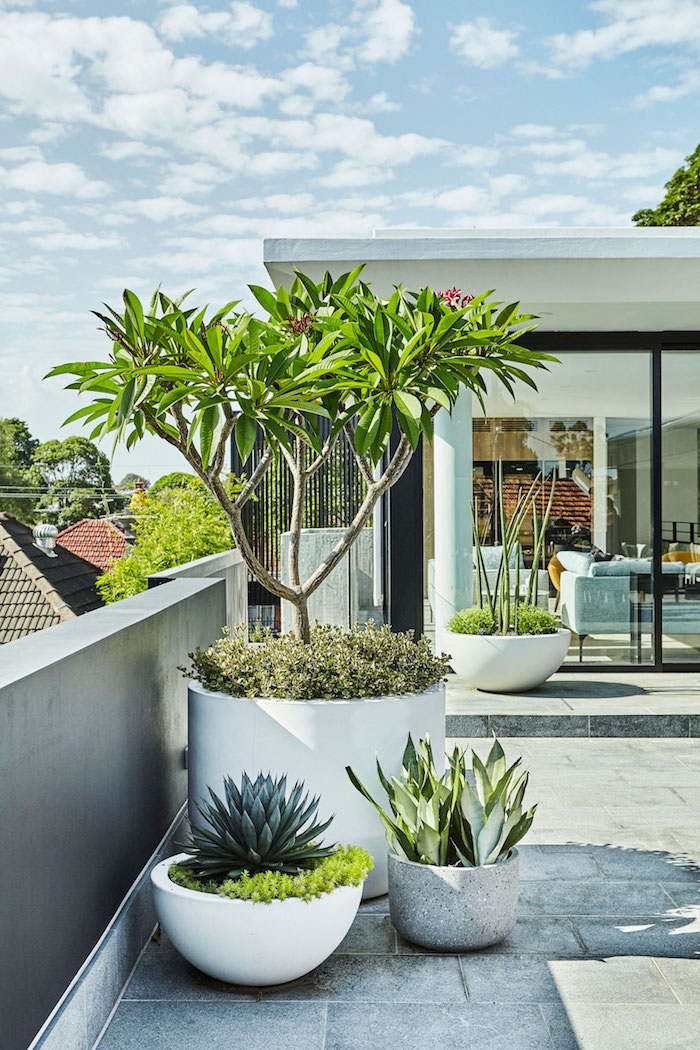 In that case, it can sometimes be tricky to reach the highest parts for hand-watering purposes and installing an irrigation system will be the go. Luckily drip irrigation systems can be made easier in terraced gardens thanks to natural gravity.
In that case, it can sometimes be tricky to reach the highest parts for hand-watering purposes and installing an irrigation system will be the go. Luckily drip irrigation systems can be made easier in terraced gardens thanks to natural gravity.
In planning a terraced garden, think about continuity so that you are keeping a similar visual style both indoors and outdoors. This helps extend the living space out beyond the house itself for a cohesive aesthetic. You can unify the two spaces through colours, materials and even the kind of furniture you add.
Source: Shutterstock21. Embrace a natural lookYou can create terraces with many different kinds of materials, including rocks and boulders. Mini retaining walls made from limestone rocks can be used like dams. They’ll trap rain preventing soil erosion, which is one of the main advantages of terracing.
22. Keep it simpleA simple two-layer retaining wall set up is an easy way to help stop erosion in a sloped front yard.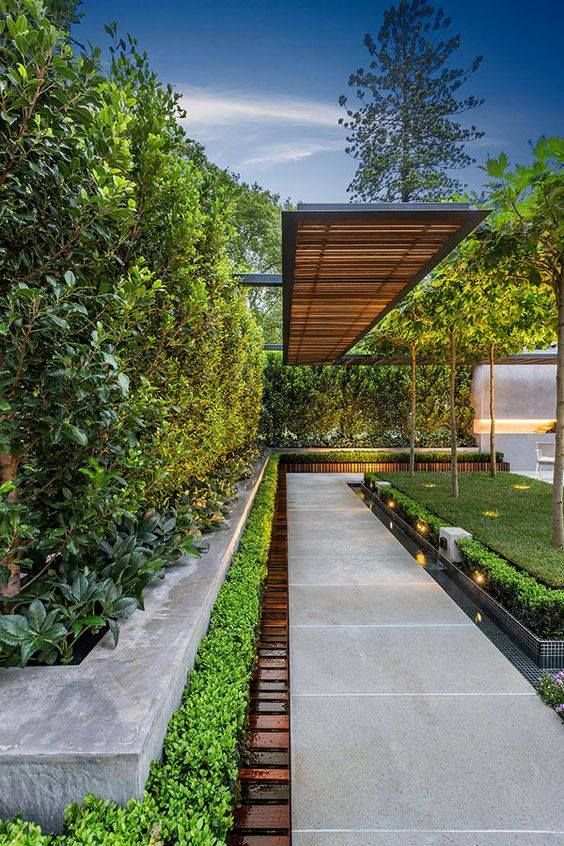 By turning the slope into several gentler steps, the rain gets trapped instead of running off. Choose an attractive textured stone that complements your home exterior. Plant hardy, low maintenance plants that will dominate over weeds so you don’t need to spend as much time out the front weeding. Or, hire someone else to handle your garden maintenance!
By turning the slope into several gentler steps, the rain gets trapped instead of running off. Choose an attractive textured stone that complements your home exterior. Plant hardy, low maintenance plants that will dominate over weeds so you don’t need to spend as much time out the front weeding. Or, hire someone else to handle your garden maintenance!
Terracing helps turn a ramshackle hillside into a sleek contemporary design, with retaining walls providing structure and order. Retaining walls can come in such a wide variety of looks and materials. And your site conditions and needs, as well as personal taste, will guide your choice. Common materials include timber, stone, brick or concrete.
24. Make it functional and aestheticNatural stone retaining walls in steeply terraced gardens have the added benefit of acting as a neutral background to feature plants.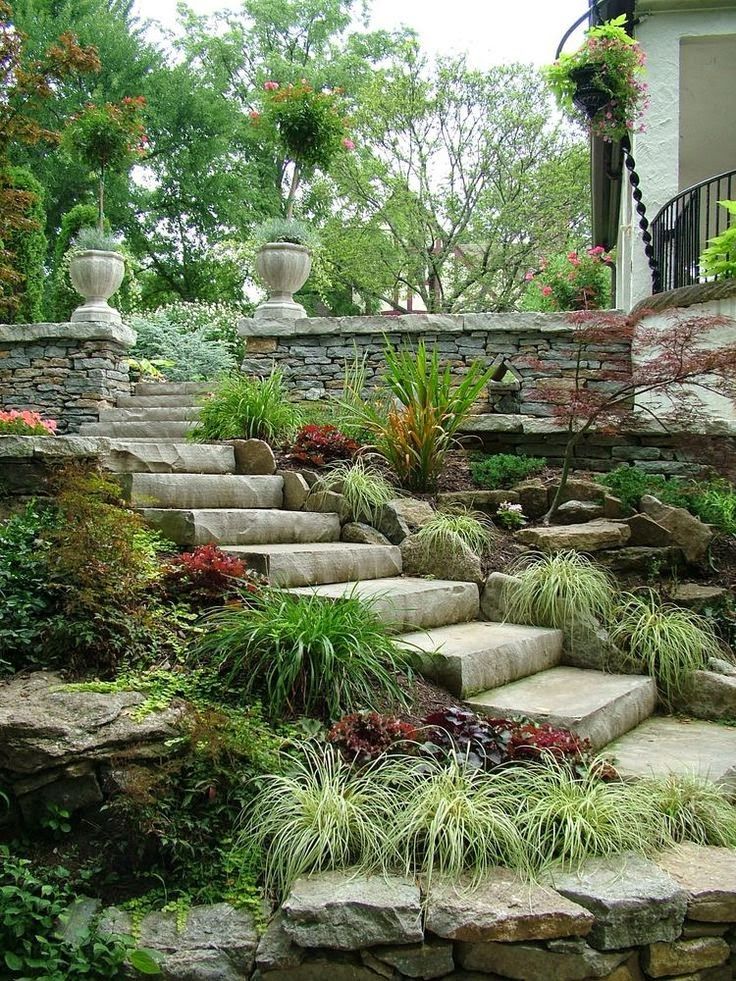 The contrasting colour really breaks up a planting to highlight focal plants. For example, a limestone retaining wall looks striking paired with a coastal planting. And this will also helps protect a seaside home from powerful winds.
The contrasting colour really breaks up a planting to highlight focal plants. For example, a limestone retaining wall looks striking paired with a coastal planting. And this will also helps protect a seaside home from powerful winds.
You might like to go for a sea of blues and greens with a succulent planting. Or, perhaps a harmonious soft-hued palette of pink and lavender flowers. If you have a particular colour scheme in mind, why not speak with an expert in garden planting who can help you bring your vision to life.
Source: Shutterstock26. Reshape a siteRather than have retaining walls installed, you can create a gentle gradient by mounding soil to reshape a site’s contours. Adding other elements like chunky granite steps or bluestone stepping stones can also rework an existing site’s form.
27. Terrace around a treeWhen planning your terraced garden and assessing existing features, consider whether ripping out mature trees is a good idea. It may have an effect on your site’s integrity by causing ground movement. A garden terraced around a tree can also look very charming.
It may have an effect on your site’s integrity by causing ground movement. A garden terraced around a tree can also look very charming.
Repetition of materials ensures all the elements and levels of a modern terraced backyard stay tied together. For example, have a pool as part of your terraced garden? Make the decking the same shade of timber as your stairs, timber bench seating or even Adirondack chairs.
For more decking inspo, you might also like to see our article on decking ideas.
29. Mix blooms and bouldersFinally–forget order and neatness, how about a chaotic cascade of colour bursting out around your steps or rocks? It’s a gorgeous and romantic aesthetic.
Of course, there are some constraints when it comes to creating a garden on a slope. You won’t just be able to start slicing into the hillside or removing existing trees and shrubs with abandon. Careful planning is needed to avoid damaging the integrity and stability of the site—who wants mudslides? You’ll need to think about the placement of retaining walls and a planting scheme that’s sympathetic to the hilly location.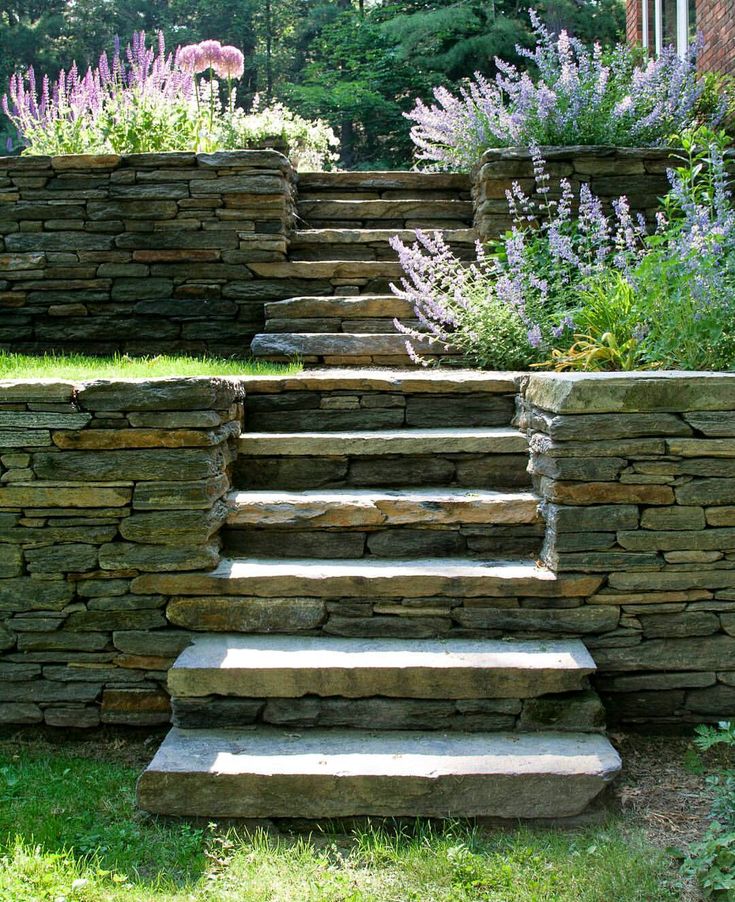
Towards the bottom of a slope, you’ll add plants that can tolerate damper soil where the moisture tends to pool after rain. At the top, you’ll plant more dry-tolerant plants. Always look for deep-rooting plants to help with stability. Adding rocks and groundcovers helps anchor soil. And planting trees that create a network of roots helps bind and strengthen the levels. For help with your garden design, you might like to speak to a local expert.
Source: Photo by Juan Burgos on UnsplashRetaining walls are common for terraced gardens as they turn an incline into smaller increments with less soil pressure. This means less erosion when it rains. A structural engineer is essential to design a retaining wall that has the right stability and strength. If you have a very steep site, it will usually benefit from site grading as well. Drainage is also crucial to get right to avoid damaging retaining walls. You might also wish to include an irrigation system that will help water slowly flow to the lower levels.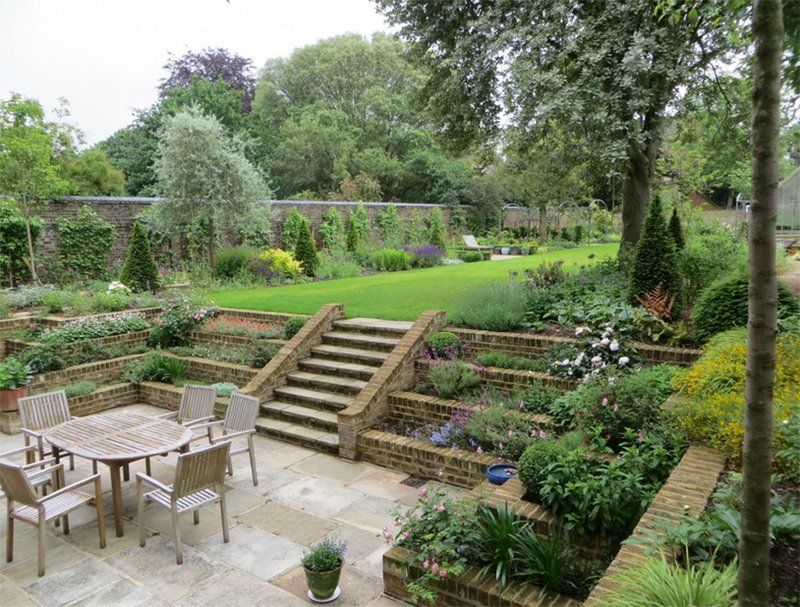 This will let you avoid a labour-intensive watering regime.
This will let you avoid a labour-intensive watering regime.
Accessibility is important to address as well. If you plant up a slope you’ll need to be able to access all areas for maintenance or for the enjoyment of social spaces. This may mean adding steps, paths or ramps.
But as you can see from all the wonderful terraced garden ideas above, there are so many ways you could design a gorgeous terraced garden. Do you prefer the symmetry and order of a sequenced arrangement of parallel terraces? Or perhaps you like a more asymmetrical, organic look? Let me know in the comments below!
35 Best Terrace Gardening Ideas & Terrace Garden Easy Guide
Yes, you can garden in the city—even if you don’t have all that much free space. It’s not wishful thinking. It’s terrace gardening.
As civilization continues to develop, you may think the opportunities for gardening are reserved for those with the soil and space.
Thankfully, modern methods of gardening are spreading across the world that can turn terraces into gardens.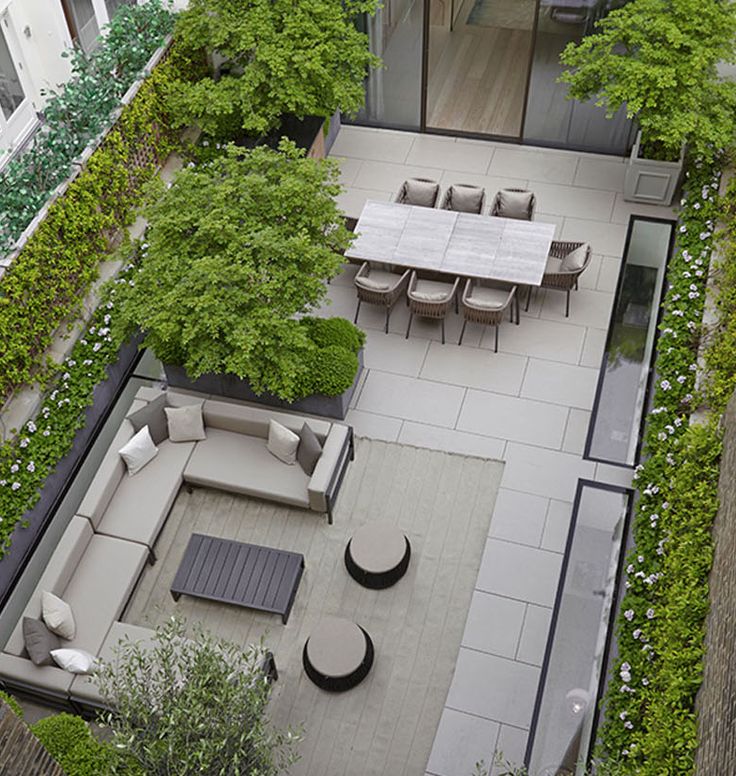
Terrace gardening makes the most out of a small space. The term terrace sounds like a large fancy porch or walkway, but the truth is that almost every home will have a terrace of some type.
A porch area, paved concrete patio, or a small balcony could all be considered as a terrace.
Whether you have just a small apartment patio, paved walkway, or even a large porch in your backyard, we’ve got a terrace garden idea for you!
Why Terrace Gardening?
Trying new methods of gardening can transform your terrace into a flourishing garden. We are living in smaller spaces, in city environments, but still want the pleasures of gardening.
These gardens can be compact or widespread depending on your space and desires.
Terrace gardening breathes life into any space. Having a natural space in an urban world can be very therapeutic to maintain and to be around. Gardening is a beneficial hobby and with terrace gardening, it can be done anywhere.
Whether you have space for a garden or only a small corner on your porch, you can grow nearly anything. Think big. Or small—there are a wide variety of plants and vegetables you can grow from the corner of your back patio.
Think big. Or small—there are a wide variety of plants and vegetables you can grow from the corner of your back patio.
Plus, you can do it all from easy to manage planters instead of digging up the dirt. Take our list to inspire you and enjoy our simple guide to making your own terrace garden!
Terrace Garden Ideas to Inspire You
There is so much you can do with terrace gardening. So, no wonder people all around the world are changing their patios into flourishing gardens.
You can do terrace gardening beautifully in large terrace spaces, homes with lawns, and even small apartment porches or balconies.
Grow organic vegetables in compact spaces from planters, plant extravagant greenery, or small herbs. Not even the rails are the limit!
Vegetable Terrace Gardening Ideas
Harvest from your terrace in a sustainable garden! There is a variety of easy to maintain vegetables that can be grown right from your terrace.
You are probably familiar with most of these garden vegetables, but did you know you can grow them from small planters?
Your garden is not confined by the lack of land.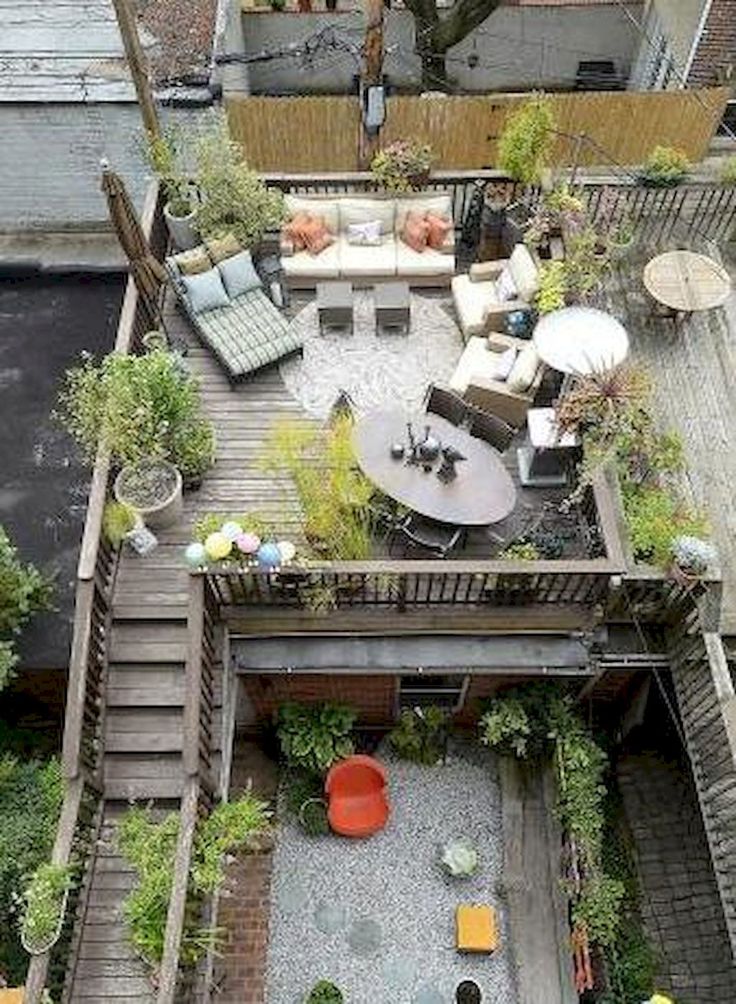 Check out some of the vegetables you can harvest in even the smallest of terraces.
Check out some of the vegetables you can harvest in even the smallest of terraces.
1. Cucumber Containers
This very popular vegetable typically grows on a large vine. But can also be grown from a bush!
In a terrace garden, you could grow a small cucumber bush from a planter. Bush types grow low and are easy to maintain.
CucumberIf you have a support beam you could still grow vine cucumbers from a container. As long as the cucumbers are small and the vines are guided away from each other, the cucumbers can grow healthy.
2. Radish Boxes
Radishes are small root plants that look like beautiful leafy greens before you harvest them. They grow fast and are beneficial to your garden.
RadishesThese little roots will defend against fleas and garden beetles that may infiltrate your terrace garden. Simply plant one or two near your cucumber to protect it!
3. Growing Peppers
Peppers grow on a vine that can be easily controlled in a terrace garden. They grow upward instead of downward meaning they are perfect for small gardens!
They grow upward instead of downward meaning they are perfect for small gardens!
Capsicum, better known as bell peppers, can be easily grown in pots if you have space where they can get lots of sunlight and strong support beams.
4. Terrace Eggplant
Another popular filling vegetable used often as a meat replacement can be grown from a planter. Eggplant is typically fairly large, needing a larger planter and space for the vines to grow.
EggplantThankfully, there are baby varieties you can manage in smaller containers if you have a smaller space.
5. Tomatoes
Tomatoes grow vertically on vines. Perfect for terrace gardening, tomatoes can grow from planters, or as hanging plants thanks to their structure.
TomatoesThis awesome vine vegetable will grow as much as the vines can, creating a beautiful garden and offering lots to harvest.
Tip: You can use hydroponics indoors to grow vegetables on your terrace. Check our hydroponics guide for an intro to this method of growing plants.

Terrace Gardening Plants Ideas
The plants that thrive in pots or boxes certainly go beyond vegetables! Wouldn’t it be amazing to turn your paved patio into a jungle of your own?
We’ve got some great examples of plants that you can put on your terrace to create an exotic environment, even in the middle of the city.
6. Layered Grass
Fill your space with luscious plants and grasses to create a forest in the comfort of your backyard.
Layer plants on top of each other that don’t need much sunlight and fill up empty spaces with dark greens and low forest plants. Having multiple types of grass and dark leafy bushes will thrive here!
7. Fern Balconies
You can make more out of the safety rails and gates in the back of the terrace. Dress it up with a line of ferns or bushy plants.
They also offer a bit of privacy from windows across the way!
Tip: Use smaller bushel plants and grass to fill in space between the ferns.

8. Layered Herbs
Herbs typically grow in small bunches, meaning they can be double stacked and grown in planters together.
Let your herbs and greens grow over each other. These easy to maintain plants will grow with sunlight and water and come in colorful varieties.
Tip: Check our herb gardening guide for more ideas.
9. Leafy Plants
The possibilities for planting are nearly endless, inside separate pales of course. Pull together a diverse group of greenery. For example, several bushes and vines varieties offer strong green leaves for your terrace garden.
Small planters with ambitious plants and leaves that climb lattice walls make terrace gardening an adventure.
Terraced House Garden Ideas
Urban living is becoming tighter and tighter, with more pavement than ever. Thankfully, there are many ways to build a garden, even in the smallest of places.
Imagine one of these gardens in your living space—how would they fit and how would you make it your own?
10.
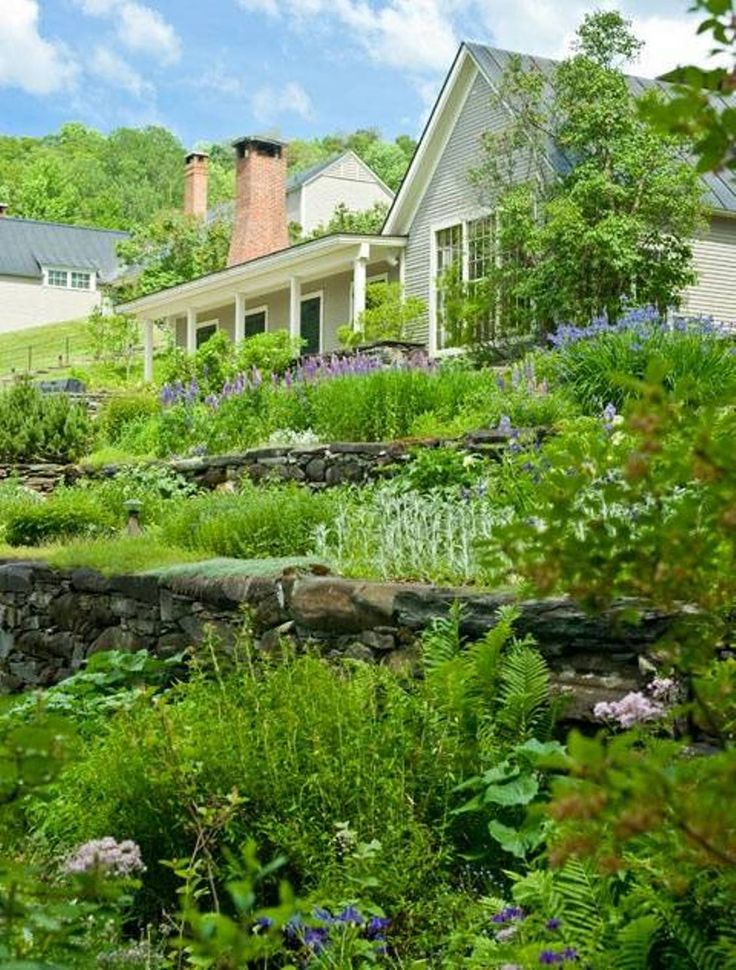 Potted Trees
Potted TreesCreate an exotic terrace alongside your walkways with a variety of tree types to enhance your environment. Try looking at the trees that have small roots and come in planters already.
Use potted trees with different shades and textures to create a vivid terrace garden out of a small paved walkway.
11. Small Root Plants
Side planters in a small backyard can dress up any small lawn. You can use a pattern of bushes, ferns, and even herbs to bring nature into your backyard.
Small root plants can often grow large branches and be planted close together, turning a minimal terrace garden into gorgeous scenery.
12. Flower Beds
The simplest way to grow a garden in a concrete environment is with colorful flowers in basic beds or pottery planters.
In the smallest and paved places, potted flowers can bring vibrant colors and smells. Flowers can grow in small planters and are easy to maintain.
13. Pathway Garden
Small ferns planted alongside concrete paths make a small space into a fun space.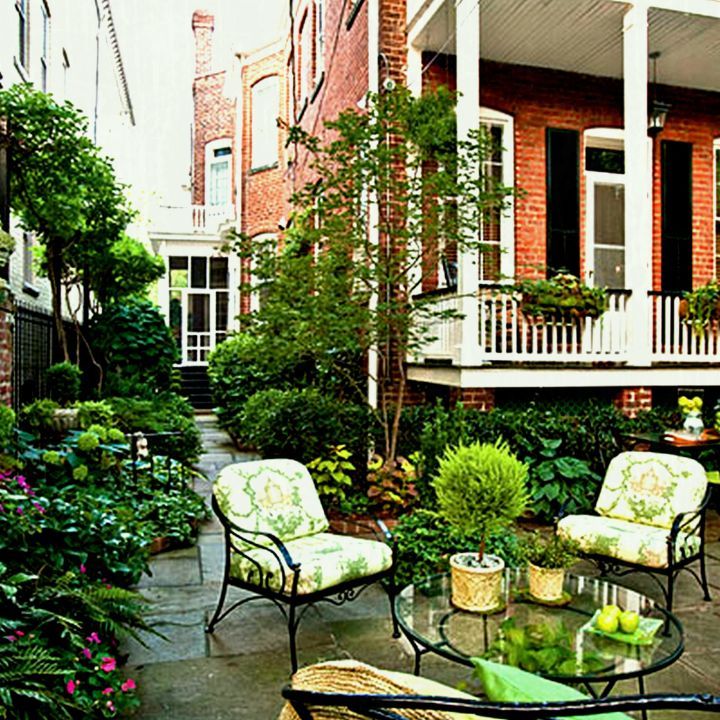 Creative design and color can change the outside view into something magnificent.
Creative design and color can change the outside view into something magnificent.
Fact: Many bushes and plants can live in manufactured dirt with little maintenance.
14. Bushes and Planters
Fluffy clover bushes and diverse flowers can make your back patio into the wild outdoors. If you have the space for big planters, try using a variety of sizes.
Tip: Try to keep to a specific style of planters for uniformity in your terrace garden.
15. Porch Projects
Create a gorgeous terrace garden you can sit in and enjoy. Make your porch into a garden using small trees and ferns as the frame.
Even in small backyards, tall trees and leafy plants can turn your small space into a secluded garden.
Terraced Garden Apartments Ideas
Many people who live in apartments think that terrace gardening isn’t an option. But when you’re using creative design and planters, small spaces can become amazing gardens.
Think low maintenance plants that offer a lot of spunk! Or just wonderful garden designs to bring a bit of nature into your urban world.
16. Barkdust Planters
Vibrant ferns, leafy trees, and other plants are easy to manage from the back of an apartment. Using unique plants with little need for growth makes terrace gardening easy.
Barkdust and compact planters create an easy to manage terrace garden in the smallest of places.
17. Small Potted Plants
Spruce up the balcony or walkway with easy to grow potted plants. If there is a spot outside your apartment that gets sunlight, you can have a terrace garden!
You can grow flowers, vegetables, and little bushes in small containers with little space to grow.
18. Zen Terrace Gardening
Transform your space into an amazing waterfall. Add greenery and leafy plants that grow in water, easy to construct colorful rocks and colors that are soothing.
If you can, try to fit in a small stool so you can sit and enjoy your terrace Zen garden properly.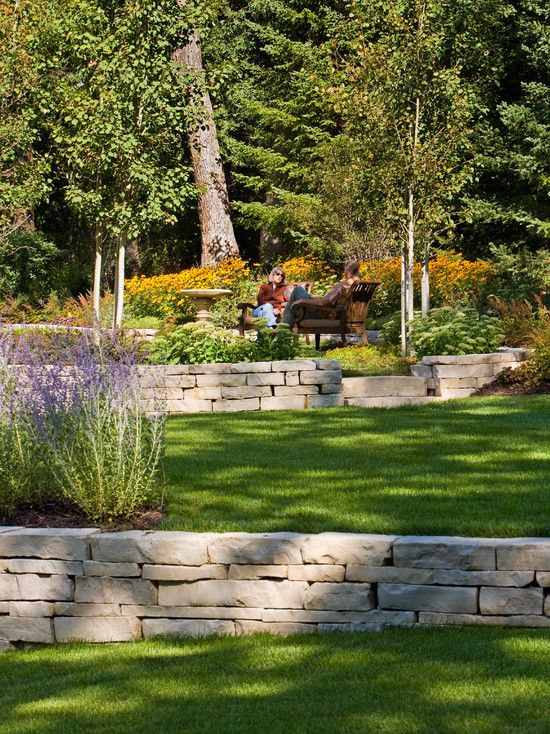
19. Hanging Pots
Make the most out of your space by moving vertically and posting up metal grates. You can use garden wire to hold your pots or hanging planters.
Put them on the ledge, put them in the air, put them anywhere they will fit!
20. Natural Shade
Canopy plants that can grow from above and small leafy trees can create natural shade and privacy in a place you might not otherwise get it!
This style of terrace gardening is cool, private, and easy to manage.
Tip: Check our guide on the best shade plants before choosing your plants.
Small Terrace Gardening Ideas
If you think your terrace isn’t big enough, think again! By being creative with planters and design your small patio can become a lavish terrace garden.
How can you manage a growing garden in a small space? Consider some of these mini planter ideas perfect for terrace gardening.
21. Creative Planters
Use different materials other than pottery as planters.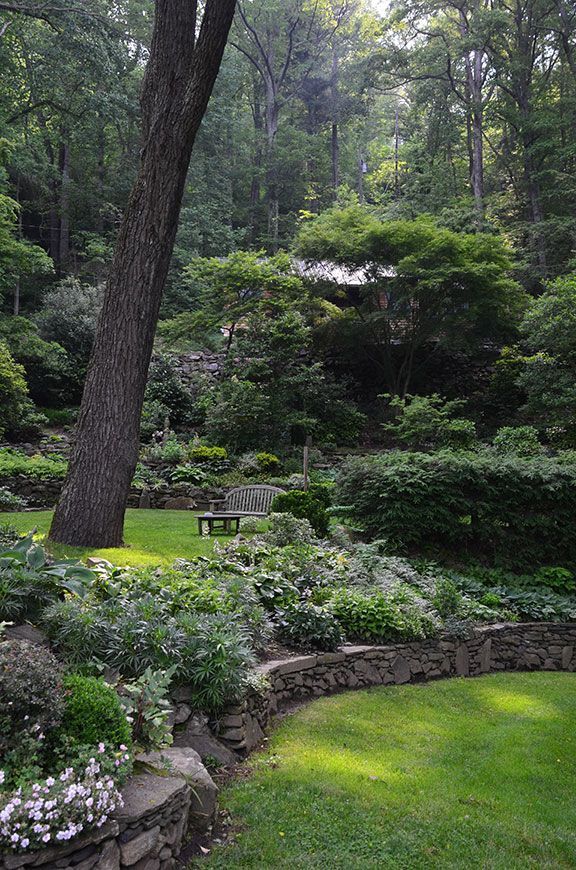 Try something unique that fits your style!
Try something unique that fits your style!
Some people like to repurpose metal containers and make them into planters. You can always take a trip to a vintage shop to see what kinds of possible planters might fit your garden!
22. Faux Grass
You can create a luscious green space with faux grass laid out on your terrace.
Used in a lot of lawn maintenance, you can lay fake grass anywhere and it will look nice and lavish. If you only have a few square feet of terrace, you can make it into a mini lawn of your own.
23. Canvas Planters
Compact, easy to move, and great as planters canvas boxes are widely available and cheap to get.
These canvas planters are made specifically to foster growth and can fit in hard to squeeze places while preventing spillover and dripping from the plants.
24. Small Planters
Small planters that can fit anywhere are perfect for terrace gardening. You can plant small herbal bushes or colorful flowers.
You can fill up even the smallest planter with a cute herbal flower that only needs a bit of sunlight and water.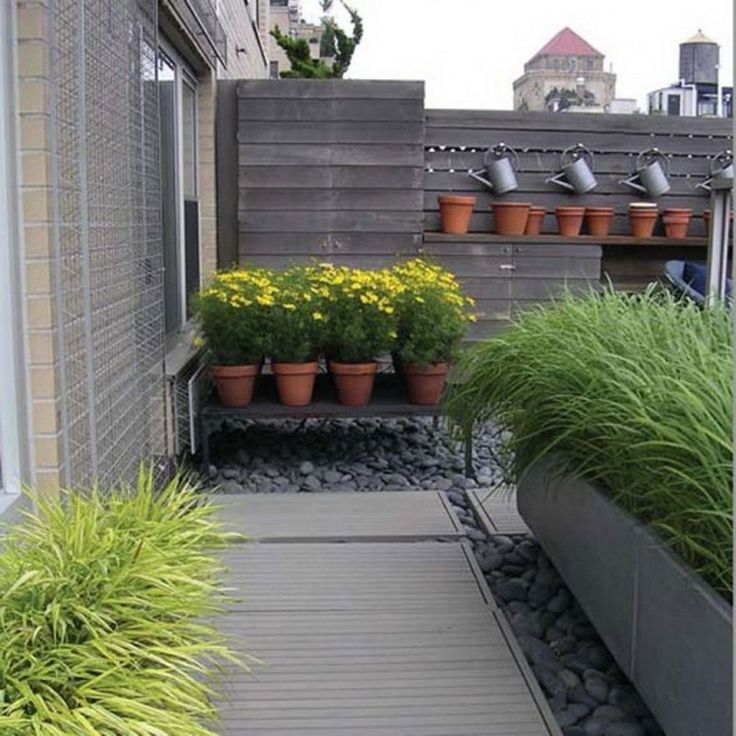
25. Vibrant Vines
Using lattice or gridded wood to guide growing healthy vines can accent your terrace without taking up space.
We know that our terrace vegetables grow on vines, but there is also aesthetic value to the tenacity of vines.
Terraced Garden Beds Ideas
When describing terraced garden beds there are two meanings, meaning beds on a terrace or a layered garden bed in a hillside. You can imagine there is a great deal of terrace gardening beds to choose from!
We’ve shown you plenty of plant and design ideas, but what should you use as a garden bed for your potted plants?
26. Wooden Boxes
Use the garden boxes to create a natural seating space and home for your garden. Create a level space for your garden to grow.
A fairly common method of planting, wooden boxes that are built with the proper wood are very pleasing to the eye. You can also build them into a design you want.
27. Frames and Arbors
Use garden boards and frames to guide vines and vegetables.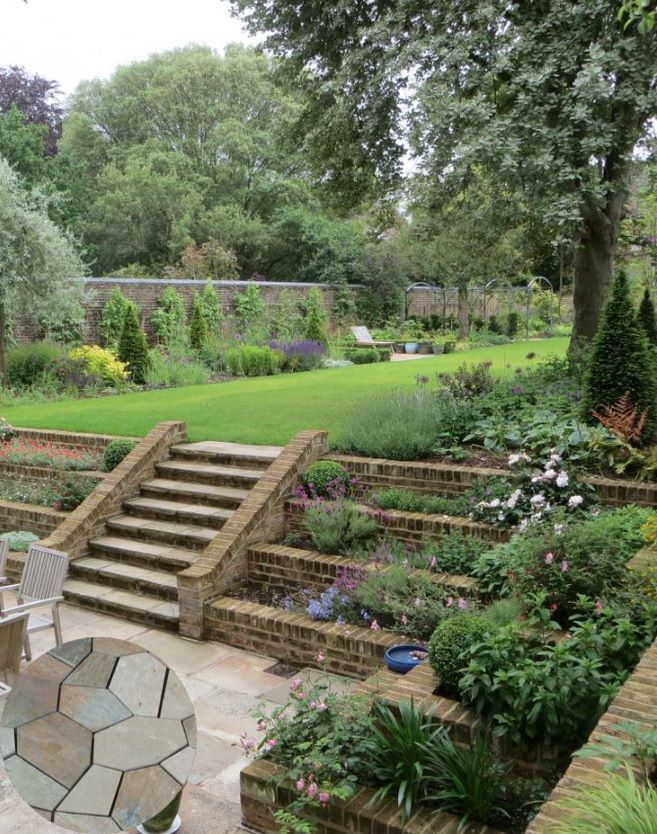 These are typically made from wood.
These are typically made from wood.
An arbor is a grid-like wooden frame that allows vines to grow within the openings. If you use these with the proper space the plants will follow the guide.
28. Organized Ceramic Planters
Use planters, small trees, and boxes to create spaces in your terrace. Organized planters can be used to make walkways and separate other areas with walls.
Create your own style with patterns and variety in your planters. Try different colors and plants to make your terrace into a unique garden.
29. Staired Boxes
Enhance your walk-up with layered wooden planters. Terrace gardening is related to gardening on slopes as well as the flat paved spaces.
Layered flower boxes make the most out of limited space! You will still want to plant flowers and vegetables that have small root systems, but you can double your gardening.
30. Built Box Pathways
Create a pathway with your planters, building boxes for your terrace to hold trees, ferns, or grasses.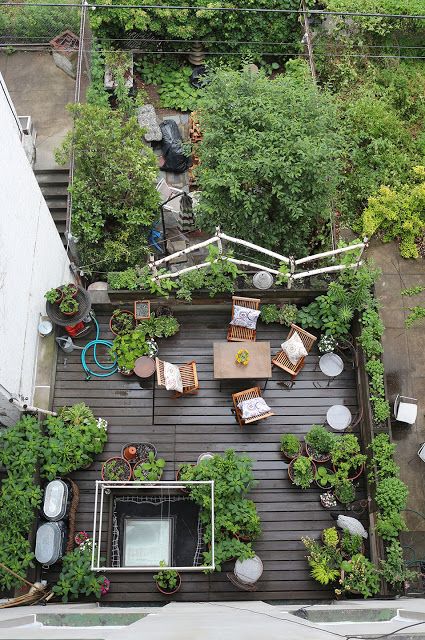
Take yourself out of the city and into your garden with chic flower boxes and beautiful plants. This would be a great place for small bushes with a variety of colors.
Rooftop Terrace Gardening
Some living communities don’t have balconies or porches to take advantage of—but every building has a rooftop!
Though you may need to check with the super of the building, rooftop gardening is a wonderful solution to bringing plants to the city.
There are numerous initiatives in urban communities fighting to bring rooftop gardening to the forefront.
Rooftop terrace gardening is a wonderful method for sustainable food sources and creates oxygen producers in the city to combat pollution.
The major flat space that rooftops offer can easily be built into community gardens. Using set structures, a variety of vegetables can be grown from the rooftop.
These terrace gardens can allot for larger vein vegetables and even bean arches.
32. Tall Trees
The heights are limitless from the rooftop.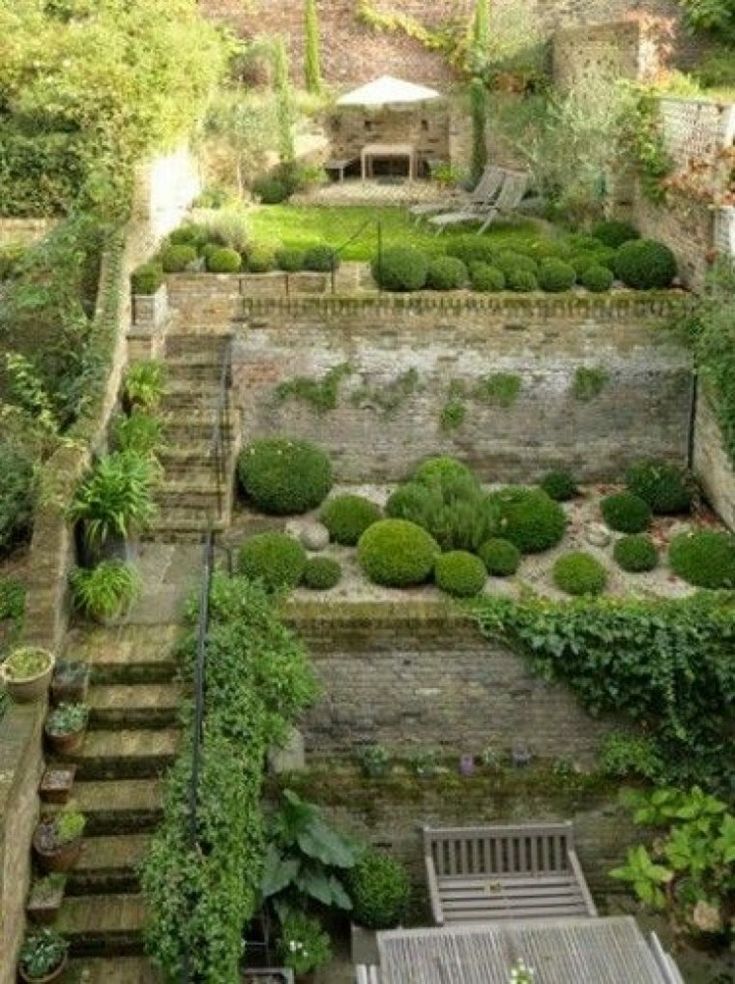 You can let your terrace grow beyond the walls—as long as it doesn’t bother your neighbors.
You can let your terrace grow beyond the walls—as long as it doesn’t bother your neighbors.
Try a variety of trees and fill your space with vibrant color to create a pleasantly wild environment. You could even try thick veins if you can guide them high enough!
33. Garden Canopies
Basic structures and boxes are a simple way to maintain a rooftop garden. The wide space of the rooftop can allow for a spread of planters among the terrace.
When plants are given the space to grow with the proper structure, they can produce more fruits, more oxygen, and more seeds!
34. Decorative Planters
Even small rooftops can benefit from decorative planters. Some areas are extremely temperate where it is difficult to grow a garden.
Resilient greenery like ferns and grasses are wonderful for terrace gardening on a rooftop with little access to water.
35. Overflowing Greenery
Creative design for stunning visuals come from large trees and bushy plants that are allowed to grow on rooftops.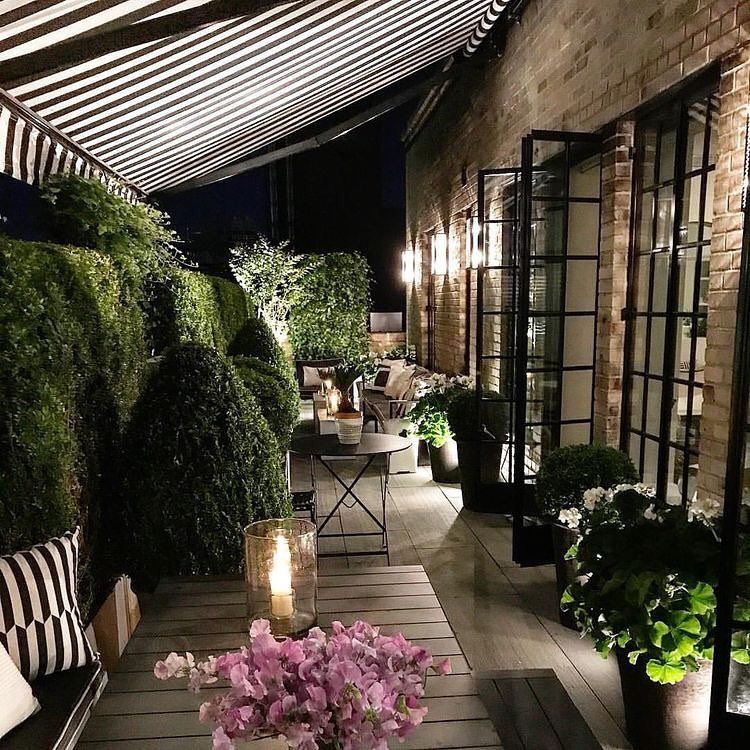
When the sky is the limit, rooftop terrace gardens can grow amazing trees and plants. Thanks to the proximity to the sun these plants get lots of sunlight, they just need to be maintained properly with water in dry climates!
How to Make a Terrace Garden
It may seem daunting at first, but if you take it step by step, terrace gardening is fruitful (or vegetable-ful) and great for your mental health, too.
Here’s a quick guide on how to make a terrace garden to help you focus on the key steps–and take them one at a time. Get started now!
Step 1 – Define Your Space
What is the size of your terrace and how much space can you take up? Always be sure to use a measuring tape to truly define the dimension of your terrace and a future garden.
Step 2 – Pick Your Garden Beds
Consider what type of garden bed will fit best on your terrace garden. Will you be using planters or vine grids? Use our list above as inspiration.
Step 3 – Pick Your Plants
Now, will you be planting vegetables or small trees? What plants will grow best in the space you have? Avoid plants that may outgrow your terrace.
Tip: Consider how frequently your plants will see sunlight and rain and pick plants that will be able to survive in that environment.
Step 4 – Design Your Terrace Garden
Now the really fun part! Drawing inspiration from similar-sized terraces, create your own space for your plants to grow and bring you joy, or food.
Step 5 – Plant Your Garden
Using the proper planting materials, whether it be soil or bark chips, carefully plant your seeds or saplings in your garden beds.
Step 6 – Maintain Your Garden
The health of your terrace garden relies on you! Check the health of your plants, make sure they get the nutrients they need and spend some special time with them—you deserve it.
Terraced Gardening Essential Tips
There certainly seems to be a lot to this terrace gardening thing, but what do you really need to know?
Here’s a quick run down to make sure you have a successful terrace garden:
- Know your space—space is your friend, not your enemy when it comes to terrace gardening.
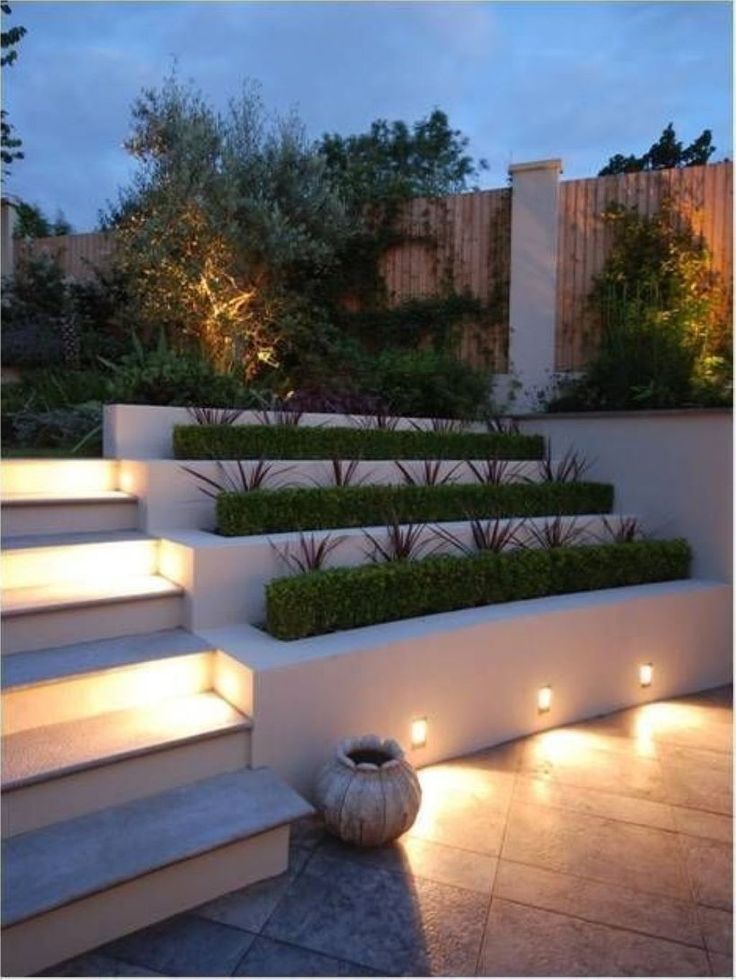
- Use quality planters—cheap ones will break before long.
- Use good soil.
- Don’t overplant—it’s better to start small and keep it all easily manageable.
- Ensure proper drainage—too much water in this case isn’t bad only for the plants, but probably also for your neighbors.
- Use alternative water sources if needed–like rain water harvesting.
Terrace Gardening Frequently Asked Questions
By now you’re probably very curious about terrace gardening. At least we hope so. Here are some highlights you may have some immediate questions about.
What is the purpose of terrace gardening?
Bring nature into an urban environment. Terrace gardening opens up doors to more sustainable living for people in cities and towns.
What can you grow in a terrace garden?
Anything that fits in a planter! You can grow vine and root vegetables, flowers, ferns, and even trees from portable—and nonportable, planters. Explore more terrace gardening ideas.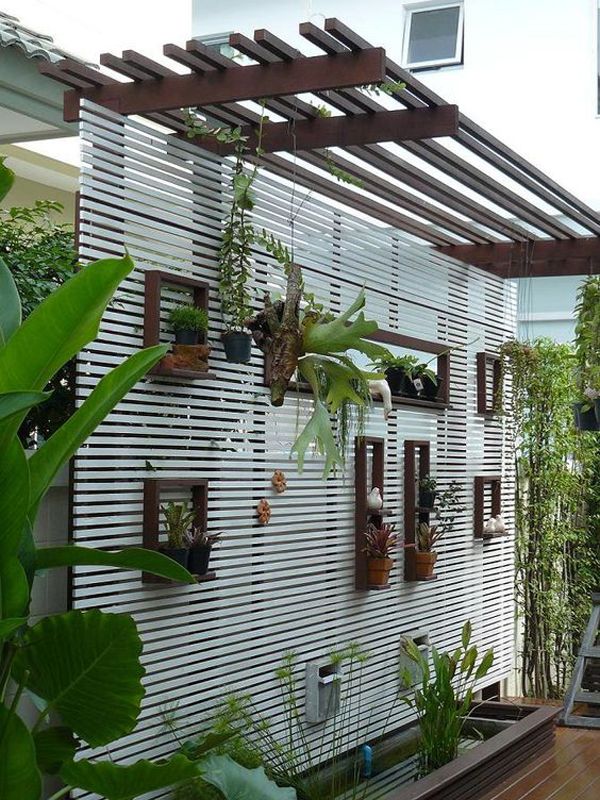
How do I start a terrace garden?
Start off your terrace garden with your defined space and some planters. Get an idea of what you want your terrace to look like or what you want to grow, and make sure to get some inspiration first.
How do you make a beautiful terrace garden?
Aside from colorful plants or trees exploding with greenery, make your terrace garden even more beautiful with detailed planters. Growing your garden from gorgeous wood or fine porcelain planters will create a lavish terrace.
Terrace Gardening in a Planter
You don’t need a large yard or plot of land to grow an amazing garden. Whether your goals are to harvest your own ingredients or just to have a beautiful scenery at home, terrace gardening will make your dreams a reality.
Terrace gardening is an important method to spread because the more greenery and plants in the world, the better—at least until plants overrun us, which is not likely to happen anytime soon.
With terrace gardening you can encourage natural eating, healthy air, and therapeutic gardening in a compartmentalized urban world.
The space for large gardening projects is getting smaller and smaller as humans continue to dominate the planet. But with terrace gardening, we can transform our buildings into multifunctional terrace gardens.
Do you have any questions about terrace gardening that we’ve left unanswered? Write to us and tell us—we’d love to hear from you.
Ideas for Terraced Gardens: Design, Key Elements and Ideas
Especially in mountainous areas, it is very common for land for sale or already built to be on a slope. Although they are not very attractive at first glance, with a good design and decoration, they can be really effective. To help you beautify sloping ground, we will give you some ideas for terraced gardens.
It should be noted that sloping surfaces offer many possibilities for decorating and designing our space. Thanks to the successful combination of key elements for this type of garden, original ideas and imagination.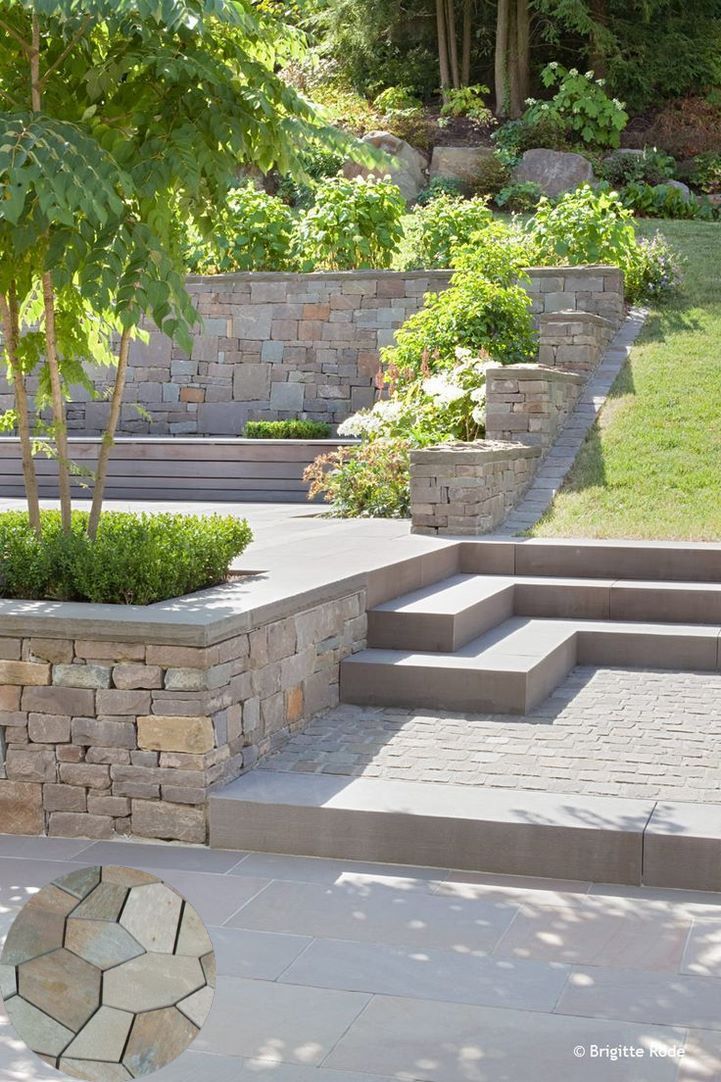 we can get a garden with a lot of personality and charm.
we can get a garden with a lot of personality and charm.
Index
- 1 Terracial gardens
- 1.1 Tilted design
- 2 4 Key elements of terrace gardens
- 2.1 slopes
- 2.2 Roads
- 3
- 3.1 Garden at different scales
terraced gardens
Before listing some ideas for terraced gardens, let's talk a little about this type of terrain. Garden design can become quite time consuming, as it is not only about choosing the plants that will grow in it, but it is also important to analyze well the conditions and characteristics of the land in question. In the case of sloping terrain, we will face a significant problem. However, sloping gardens have some advantages:
- More options to play with colors, shapes and textures. With a little imagination, we can give it a very original look.
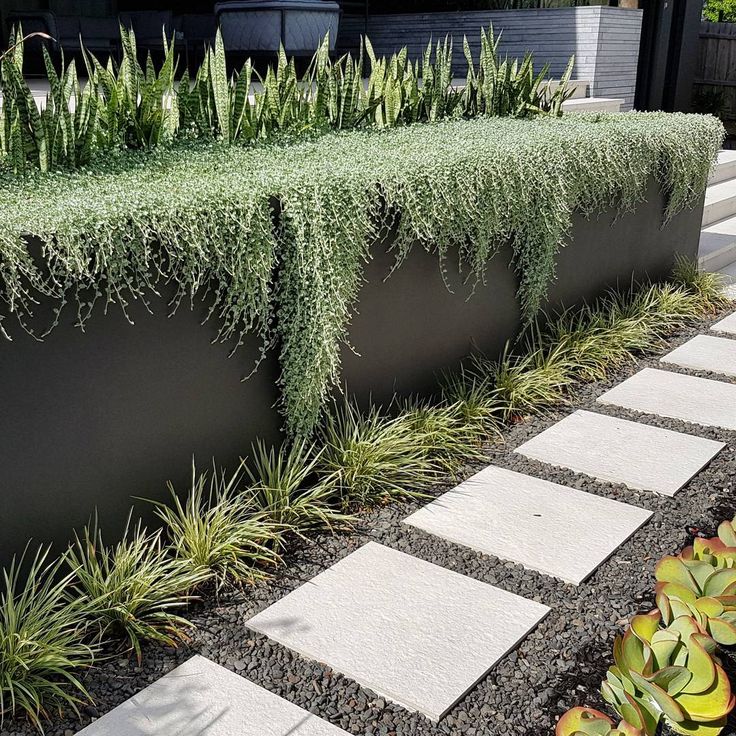
- Spaces appear larger.
- A well-designed terraced garden can have a lot of personality.
Slanted Design
Before we start removing soil and turning the soil upside down, we must first know exactly what garden design is best for our particular land. This requires a study of its slope. For this task, it is best to contact a landscape designer for advice. Depending on the percentage of inclination, we will need certain tricks or none at all:
Subscribe to our Youtube channel
- Site with a slope of about 3%: No special treatment required.
- Land slope up to 10%: Erosion control system required.
- Ground slope greater than 10%: more specific methods required.
usually Solutions that are usually given on the slopes are rockeries, terraces and even the preservation of the natural slope. This type of design for terraced gardens can be combined with other elements, such as stairs or paths, which help to move around the ground without much trouble.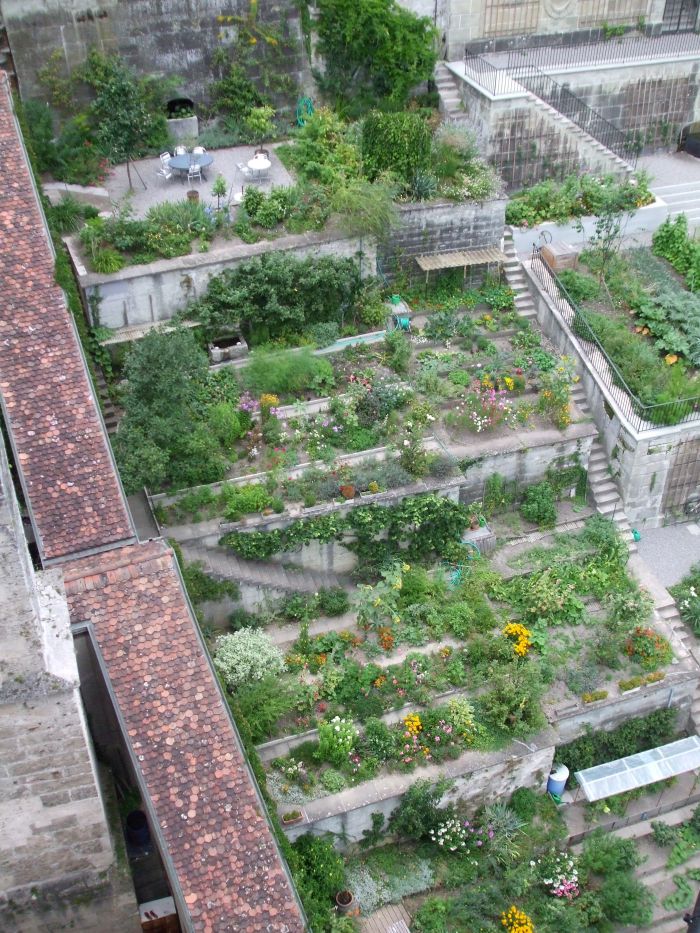 In addition, we can mark certain points of interest in our outdoor area with them.
In addition, we can mark certain points of interest in our outdoor area with them.
4 key elements of terraced gardens
There are many options to take advantage of the rather steep terrain. Before ideas for terraced gardens, we are going to comment on four elements that are key to this type of land and make it so much more attractive. There are usually four very common design elements that create additional ambience, thus providing a wider space effect. They are as follows:
- Slopes
- Terraces
- roads
- Rockery
When any of these four elements is activated on sloping terrain First, the conditions and features of the terrain in question must be carefully studied. This is the only way to make the best decision when designing and decorating a terraced garden.
Slopes
What is a slope? This is an accumulation of rocks and their pieces in hollows. If the area under consideration has natural slopes, its design becomes quite complicated, as they are constantly eroded by irrigation and rain.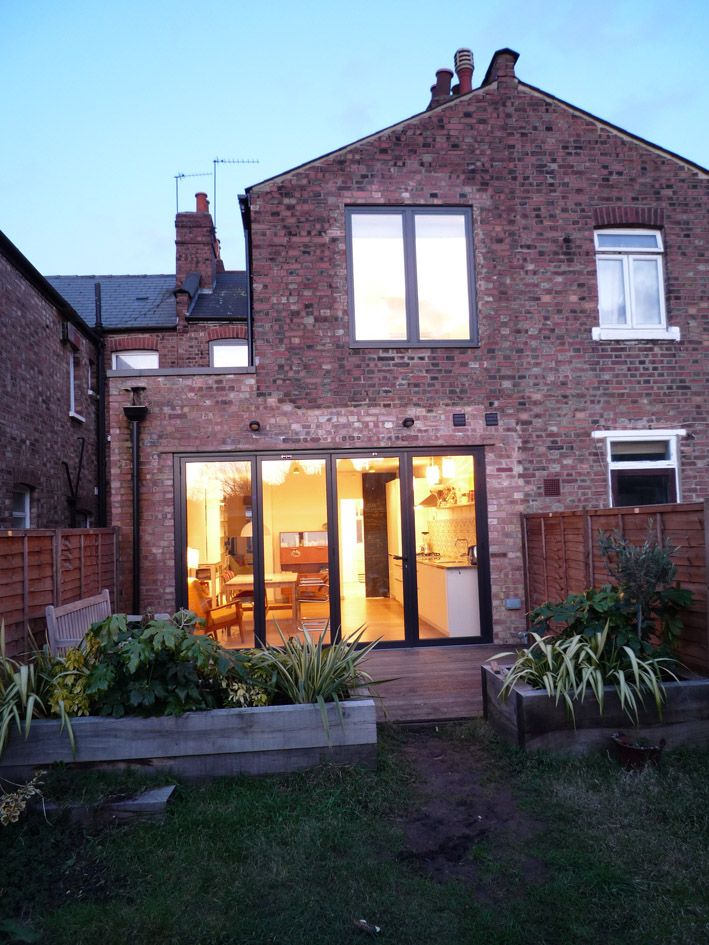 This is because the slope of the ground causes water to run off and eventually wear down the soil.
This is because the slope of the ground causes water to run off and eventually wear down the soil.
We have two possible solutions for this element. One of them is to surround the slope with plants that have large roots, such as agave, ivy or honeysuckle. Another option we have is to use a drip irrigation system in the garden. This system is localized, that is, it is located specifically in the plant, so the entire soil is not moistened.
Terraces
One of the best tools for sloping terrain is without a doubt terraces. Thanks to them, we get two or even more environments in one. That's how they provide us with various attractions in our garden. which are extremely attractive.
To decorate them, it is a good idea to place a grass or artificial grass carpet in the garden area. Also a fantastic option is to include multiple stairs to create a beautiful route. Of course, we have a lot of games and freedom to let our imagination run wild.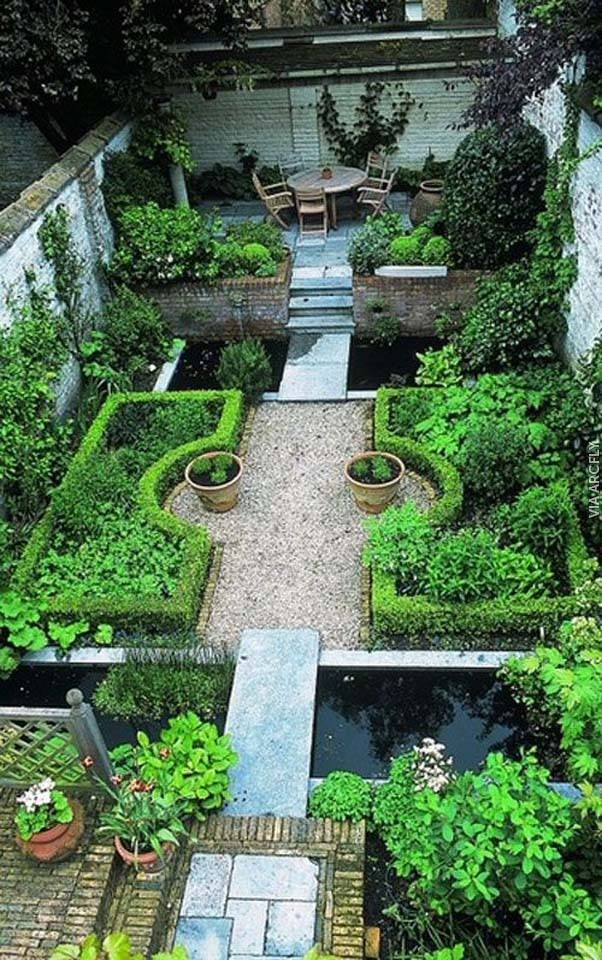
roads
As we mentioned earlier, both paths and stairs are essential in sloped gardens, as they make it much easier to move on the ground in a convenient and easy way. However, these elements perform not only a practical function, but are also important at an aesthetic level. Steps, for example, can be of different shapes, sizes and materials. This will depend on the style we want to implement in our garden.
Rockery
Rockery is one of the most effective solutions for a terraced garden. Since it is mainly composed of rocks, It gives our garden visual interest and personality. If you decide to place rockeries on your site, this will definitely not go unnoticed.
Article subject:
How to take care of garden rockeries
It should be noted that the terrain does not have to be rocky in order to be able to acquire rockeries. We can just put the stones on the ground and arrange them however we like, it's not very difficult.
As for plants for this element, most suitable are those with slow growth. In addition, it is advisable not to abuse the amount of vegetables. In rockeries, plants usually grow between stones. Therefore, we must be aware of the appearance of grass that is alien to what we have planted.
6 ideas for terrace gardens
Now it's time to talk about ideas for slope gardens. We understand the key elements for sloping terrain, but now we're going to see how to decorate it and capitalize on it. In total we list six Idea, of which we can choose the ones we like best for our case:
- cover walls: We can cover uneven walls with green walls, plants, vertical gardens or a colorful fence.
- Same plants: Create small levels, like steps, with a type of plant on each level. They can be transitional levels to access an area of interest at a higher level, such as a barbecue, swimming pool, etc.
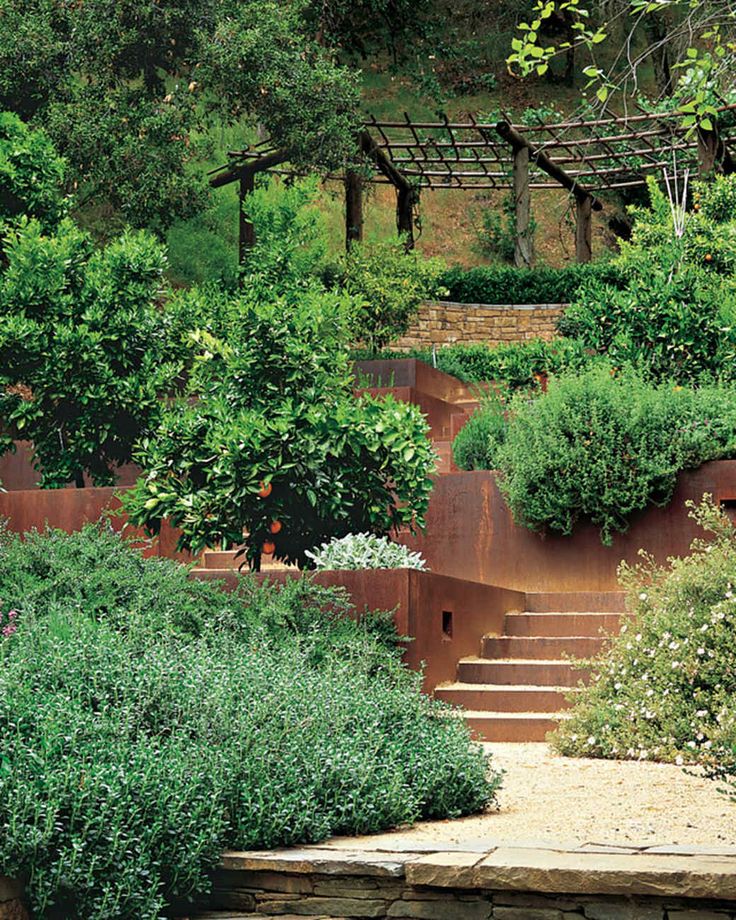
- Create mini-landscapes: If we have a staircase or a steep path that takes us from one place to another in our garden, we can take advantage of the unevenness to create different squares with retaining walls and create small landscapes, for example by combining plants with rocks.
- Water: Taking advantage of the unevenness, we could think of creating a small pond with a waterfall in the garden. Not only would it be extremely inviting, but the sound of the water provides peace of mind.
- Slides: Especially if we have small children at home, installing slides to move from one ladder to another can be very exciting even for adults. Of course, we must not forget to also put a ladder next to it in order to return to the top.
- sea of ivy: Similar to the first wall covering, we can also create an ivy blanket on the sides of the stairs. The goal is for the level change to be perceived not as a step, but as a green, leafy slope.
Garden at different scales
Surely you have seen a house on a very sloping site more than once. In these cases, is the most common design with different scales. Some retaining walls are created to prevent earth from falling down a slope. From afar, it looks like a staircase with huge steps. A priori, this is not a very beautiful design, but it can be.
Obviously, ladders are required to move from one scale to another. So, first we have to decide if we want them on one side, in the middle or, for example, in a zigzag. Now what do we do with so many different scales? An idea that is often used is to create different environments and even gardens. At every scale we can create a distinctive type of garden, either by style or vegetables or whatever comes to mind. Another option is to make barbecue areas, a pool or a track for sports. There are truly endless possibilities. To further differentiate the environment, we can also play with the floor type of each one.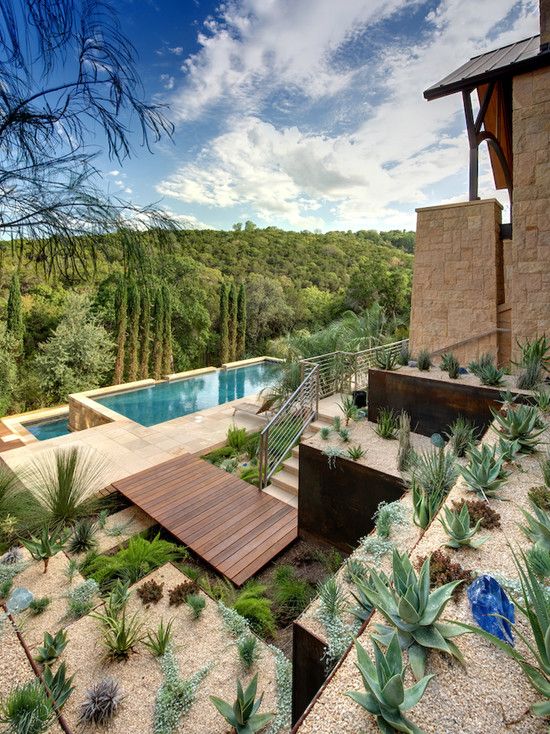
Also very common use of scales to create various gardens. This is a practical way to collect vegetables of the same care and characteristics and control them all in a very convenient way.
I hope this article has inspired you to design your future slope garden or modify the one you already have. As you can see, there are many ideas for slope gardens, it all depends on the level of slope of the site, the space available and our tastes. You can leave us your experience and ideas in the comments.
Terraced garden design, where to start with terraced landscape design?
View from the terrace of Villa d'Este on the city of Tivoli. Italy. Source nemiga.info
A plot of land on the slope of an overgrown ravine or a steep hill is sometimes all that those who wish to purchase a plot of land in a very good location can count on - an old-fashioned village near a metropolis or other prestigious settlement. In fact, such foes have enormous potential for creating a magnificent terraced garden.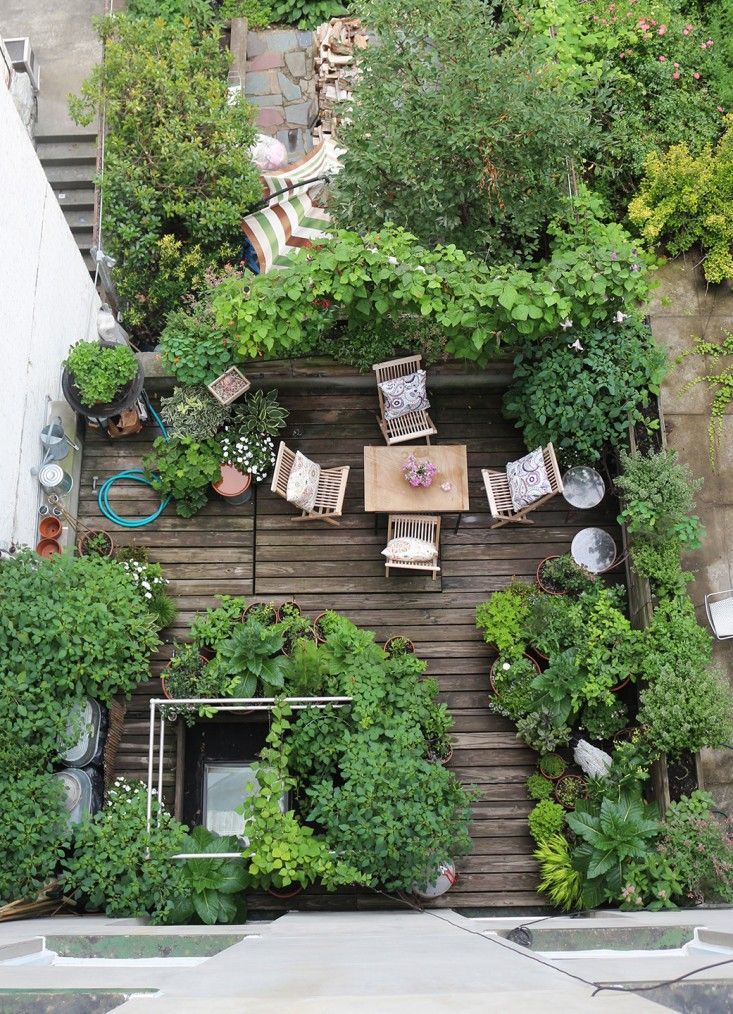
The idea of a terraced landscape is as old as the world. From time immemorial, in many countries with mountainous terrain, horizontal platforms (terraces) were arranged on the slopes, on which cereals and vegetables and fruit trees were grown. Over the centuries, terraced landscape structures have become an important part of landscape art.
The creation of terraced gardens begins with a professional geodetic and geological survey of the land. A landscape architect must know what he is dealing with before taking any specific steps. Having a detailed map with marks of heights, characteristic points and drops, specialists outline terrace levels in order to optimize the amount of excavation and provide the most comfortable topography of the landscape. At the same time, they strive, if possible, to preserve the lines of natural relief on the inclined segments (between terraces). Soil from excessively steep slopes is transferred to the formed horizontal platforms. In the best scenario, a zero balance is achieved, that is, soil is not imported from the side at all.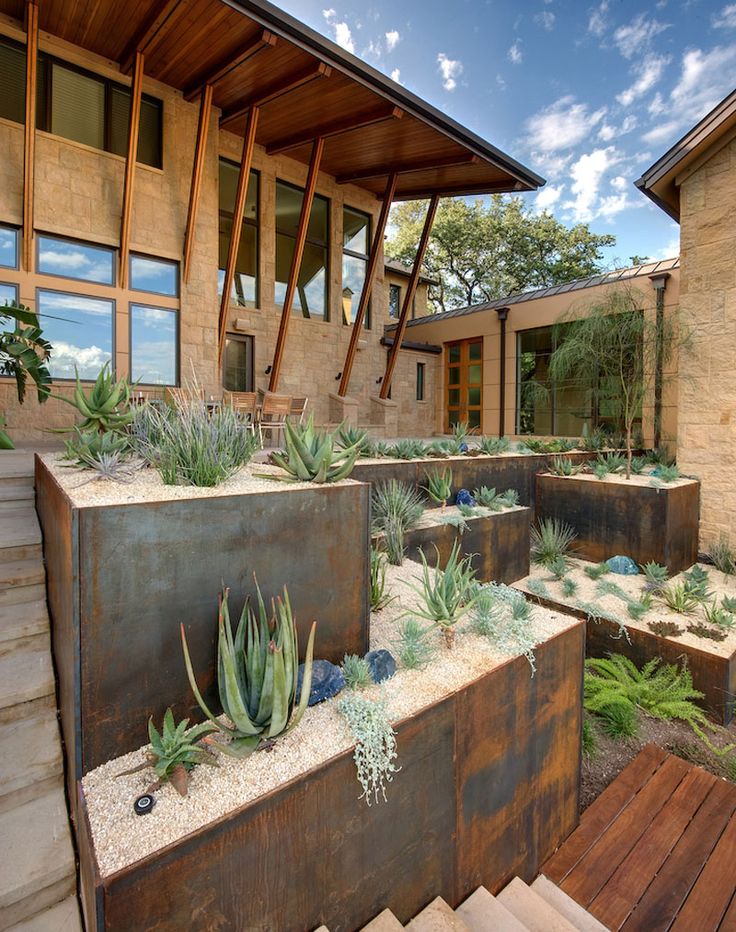 It is clear that such economic achievements are possible only if the work is carried out in accordance with professionally executed project documentation.
It is clear that such economic achievements are possible only if the work is carried out in accordance with professionally executed project documentation.
A site on a slope is mastered from top to bottom. It is obvious that the main house is being built on the first level with a real terrace with access to the garden. The easiest way to create a horizontal platform for the construction of the main residential building is to cut off the top of the hill. However, it is not always possible to do so. In addition, the advantages of a house on a slope compensate for the additional costs of building a foundation on difficult terrain. This arrangement opens up broad prospects for the development of an original architectural and planning solution. For example, the building is partially integrated into the mainland soil. Cantilever structures are also actively used, thanks to which the cottage is partially extended above the slope. The space below this "floating" block can be used for both practical and aesthetic purposes.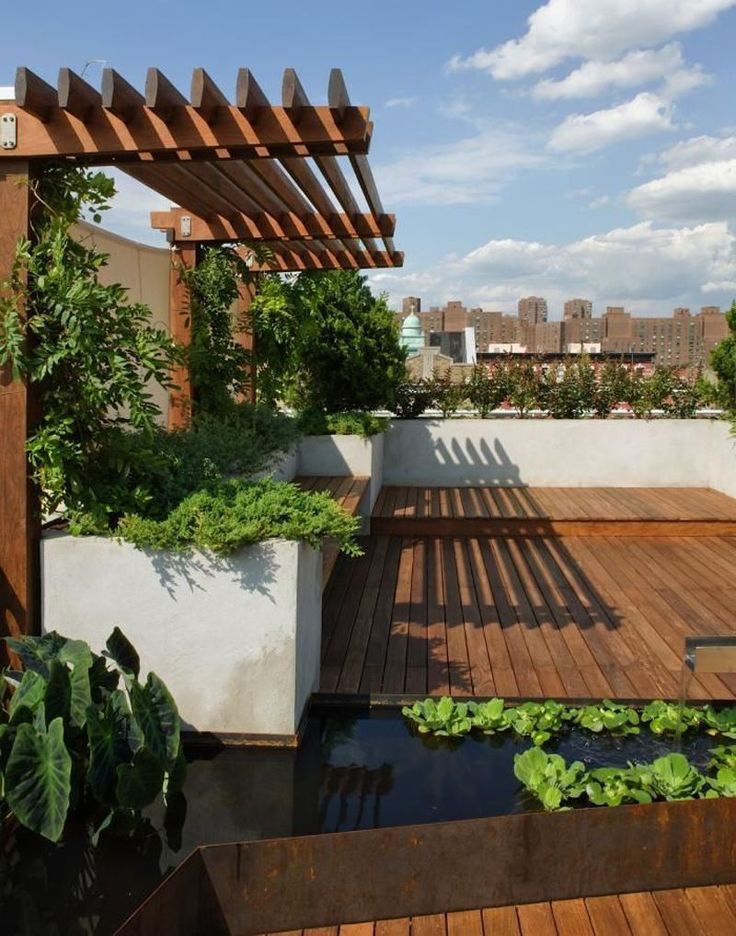 The windows of the house offer breathtaking views of the distant expanses - to the very horizon. To enjoy excellent visibility, balcony galleries are made in buildings on a slope and panoramic windows are installed.
The windows of the house offer breathtaking views of the distant expanses - to the very horizon. To enjoy excellent visibility, balcony galleries are made in buildings on a slope and panoramic windows are installed.
Summer kitchen, barbecue, playground and other functional areas are arranged on garden terraces. During their formation, retaining walls are erected, as a rule, of monolithic reinforced concrete, and then they are decorated with facing bricks, stone, and wood. The higher the terraced “stern”, the more powerful its side should be. Retaining walls with a height of more than half a meter are built on the foundation. In cross section, this design is a rectangular trapezoid facing inward at a right angle, that is, to the soil filling of the terrace. Retaining walls usually protrude 10-20 cm above the surface of the terraced earth. Ampelous and ground cover flowers in pots are placed on the edge (horizontal plane), and climbing and flowering climbing plants are planted at the foot of the retaining wall.
Particular attention is paid to the tracing of tracks so that movement around the site in all directions is convenient and not tiring. Stairs are made gentle with wide steps and a riser height of no more than 15 cm. Platforms are arranged between marches, observing a certain rhythm, that is, the same number of steps (at least three and no more than 15 steps in a march). Ramps are laid along and across the slope, allowing you to move freely with garden carts and other equipment and mechanized equipment.
Cross tracing with the device of ramps and gentle stairs. Villa d'Este. Tivoli, Italy. Source: sfw.so Sloping segments of the garden, i.e. the smoothed slope of a hill or ravine, need to be strengthened. Under favorable conditions, it is enough to sow well-rooted lawn grass, plant flower beds and plant berry and ornamental shrubs. But often the soil between the terraces has to be strengthened with the help of geotextiles, geomats, geogrids, geogrids and biomats (multilayer stitched fabric made of natural fibers) and other materials and products that hold the earth in place and do not allow it to slide.